Welcome to another very educational article here at GND-Tech, home of the real myth busters! Once again we evaluate the gaming industry, this time to pinpoint and shoot down the biggest myths that won’t seem to go away. Most of these video game myths arise from people being sheep and not thinking for themselves, and they do serious damage to the industry. Dispelling these myths is a universal good that will help raise humanity to higher levels, so do pay attention. Without further ado, let’s begin.
Monitor/Screen Technologies
“IPS master race!”
There are many different screen/panel technologies used in monitors. LCD is the most common, and there are three main types of LCD panels: TN or Twisted Nematic, In-Plane Switching or IPS, and Vertical Alignment or VA. TN is most common on computer monitors although IPS is also very common, while VA is most common on TVs. Aside from LCD technology we have Cathode Ray Tube (CRT), Plasma, and Organic Light-Emitting Diode (OLED).
There are a lot of myths surrounding different panel types and their relation to gaming. One thought is, TN is the best for gaming because it’s the fastest LCD type (only enthusiasts even consider non-LCD panels). A more common thought nowadays is that IPS is the best. Colors! Both thoughts are incomplete, misguided, and largely incorrect.
Truthfully, LCD is so inherently flawed and inferior that it should be killed off. This includes TN, IPS, and VA. All three suck. TN sucks the least when it comes to motion clarity, since it has the fastest response times. IPS sucks the least for color critical work since it has a few benefits over VA for such things. VA sucks the least for image quality for entertainment purposes (gaming, TV, movies) but not color critical work. Very high end VA 4k/UHD TVs are the only LCD displays that don’t have absolute rubbish image quality, but their motion clarity is terrible. So, all suck, but each one sucks a little bit less for certain things.

“I want 1ms response time!” – This is related to an often baseless obsession with numbers. People see superclocked! or turbocharged! and think they have to buy it, this is no different. Response time refers to pixel response time. Higher = more motion blur. If it’s higher than 1/refresh rate then there will be lots of motion blur in particular. TN only has one concrete advantage over IPS and VA aside from cost, and that’s response time.
Note that manufacturers BS their response time specs, listing a value that’s always closest to the minimum response time with maximum overdrive. It is not representative of average response time. Response times vary for every color transition, but TN and IPS are generally quite stable across the board. VA is not. The best average TN response time is just under 2.5 ms with horrible overshoot (just under 3 ms with a low amount of overshoot ghosting), seen on 144 Hz TN monitors such as the ASUS ROG Swift PG278Q.
The best average IPS response time is around 5 ms with no overshoot artifacts, accomplished by the ASUS ROG Swift PG279Q and other recent 144 Hz G-SYNC IPS monitors (Acer Predator XB271HU and presumably the ViewSonic equivalent).
As for the visual difference? See for yourself. Images courtesy of TFTCentral.

Since that test was conducted at 144 Hz, it shows each of the three monitors at their best. The XB270HU (IPS) is a little more smeary than the rest, but to my eyes the PG279Q (IPS) is the cleanest image. The PG278Q (TN) has a tiny bit less blur at the cost of overdrive artifacts, in the form of inverse ghosting. But, a negligible difference for both in practice.
Note that as you go below 100 Hz, TN starts to gain a bigger advantage since TN response times are more consistent across refresh rates. TN response times at 60 Hz for example are much faster than IPS and VA, and this is relevant for these screens since G-SYNC synchronizes refresh rate with frame rate.
In conclusion, let go of your 1 ms idea since it’s BS anyway. Backlight strobing blur reduction makes response time a minor factor anyway, although this is most effective at high refresh rates/frame rates (preferably well over 100).
VA response times are catching up to IPS. In fact, as far as 60 Hz displays go, many VA TVs are as fast at 60 Hz as the fastest IPS monitors, with no overshoot artifacts either. The few high refresh rate VA monitors are also faster than most IPS monitors at 60 Hz. As for high refresh rates, Samsung’s new 144 Hz VA panels are coming very close to IPS response times. See TFTCentral’s review here:
http://www.tftcentral.co.uk/reviews/acer_predator_z271.htm
With VA response times being close enough to fast IPS, it shows that for all entertainment purposes (gaming, movies, TV), VA can make IPS and TN redundant and unnecessary since its static picture quality is far greater thanks to greatly superior static contrast and black depth.
Let’s take a more detailed look at the pros and cons of each panel type.
CRT (Cathode Ray Tube)
CRT isn’t even considered by 99% of the market since it’s dead technology. Only really hardcore competitive gamers use it for the response time, although such PC gamers now use LCD monitors with backlight strobing blur reduction.
LCD has severe inherent disadvantages over CRT, Plasma, and OLED, mostly because of the fact that LCDs rely on backlighting (either edge-lit like all computer monitors, or literally backlit on higher end TVs) while CRT, Plasma, OLED, and SED/FED (not that this panel type exists anymore) produce light on the surface for each and every pixel, hence the greatly superior contrast ratios, deeper blacks, more pure whites, far richer and fuller colors. For example, blacks are only true blacks on CRT/Plasma/OLED/SED/FED, not LCD, since the pixel actually has no light on these unlike LCD. LCDs also use sample and hold which leads to more motion blur especially compared to CRT and SED/FED.
CRT Pros
CRT displays were powered by an electron gun, and drew lines directly on the screen making it a self-emissive display. However, these lines are less sharp than today’s pixels seen on other display types.
- High contrast ratio, at least 15000:1.
- Perfect black depth, far beyond what LCD is capable of (even VA) due to CRT displays being self-emissive.
- By far the best color accuracy of all panel types (especially when calibrated).
- Response time is well under 1 ms, so almost instantaneous. This results in no perceivable motion blur from the monitor. So far, nothing comes close to CRT in this regard, although OLED may be able to when they ditch sample and hold.
- Extremely wide viewing angles.
- Works well with high refresh rates.
- No backlight bleeding since there is no backlight.
- Lossless aspect ratio scaling and resolution scaling.
CRT Cons
- Dead technology.
- Magnetic interference, which would be a deal breaker for a lot of people. Most modern audio components aren’t shielded and would suffer, for example.
- Poor ANSI contrast ratio, which sort of negates the general contrast spec.
- Bulky and heavy.
- As the monitor ages, the image may blur over time. However, CRTs can be refocused, some easier than others, so this shouldn’t be a permanent issue.
- Proper calibration takes hours and is very tedious.
- Less maximum brightness than LCD, especially LED backlit LCD.
- Slightly less sharp image than LCD, OLED, Plasma.
CRT is fundamentally flawed just like LCD is. It’s currently the best for competitive twitch gaming though.
TN (Twisted Nematic) – LCD
The cheapest, most common computer monitor type.
TN Pros
- Cheap to make.
- Very good response times, the best average response time being just under 3 ms.
- Available with high refresh rates, up to 144 Hz currently.
- Available in all sorts of configurations like 2560 x 1440 144 Hz, 1920 x 1080 144 Hz, etc.
- Higher peak brightness than Plasma and OLED, especially LED backlit models (which is any modern day LCD).
TN Cons
- Poor color accuracy.
- Poor contrast ratio. The best you’ll see is around 900:1 or 950:1.
- Lackluster black levels.
- Most use a thick grainy TN film screen coating that deteriorates image quality even more.
- The worst viewing angles EVER. TN looks bad and suffers gamma shift and more just by moving around ever so slightly, or if you have a very large TN screen, the gamma shift might be noticeable head-on.
- High probability of backlight bleed.
IPS (In-Plane Switching) – LCD
IPS is the most used panel type for photo editing, because of all LCD panels it has the best color accuracy. It is becoming increasingly common, 2nd only to TN for computer monitors.
IPS Pros
- The best potential color accuracy of all LCD panels. Only realized by professional displays from NEC, Eizo, and the like. Typical IPS monitors still have far better color accuracy than typical TN monitors though.
- Response times are very good on state of the art gaming IPS monitors such as the Acer XB270HU, XB271HU, and ASUS PG279Q.
- The widest viewing angles of all LCD panel types.
- Available with high refresh rates, up to 165 Hz on the Acer XB271HU and ASUS PG279Q although that’s not much of an improvement over 144 Hz since the response time isn’t quite quick enough for 165 Hz.
- Available in all sorts of resolutions such as 27″ 1440p at 144 Hz, 3440 x 1440 at 100 Hz, and 4k.
- Higher peak brightness than Plasma and OLED.
IPS Cons
- Poor contrast ratio. The best you’ll see is around 1000:1 on computer monitors, maybe more on some rare IPS TVs. I have read of some IPS displays producing 2000:1 contrast, but I don’t know if these panels are used on anything, and 2000:1 still isn’t great.
- Mediocre black levels, the same as TN but made even worse by IPS glow. Which brings us to…
- IPS glow, which causes dark screens to appear white(ish) when viewed at angles (even minor angles with bad IPS glow). So IPS viewing angles aren’t perfect. IPS glow is very problematic on very large monitors, like 34″ Ultrawide ones.
- High probability of backlight bleed.
Unfortunately if you want 1440p or 4k with dynamic refresh rate, you’re stuck with IPS or TN. IPS glow ruins dark games; the measured black depth is equally bad on IPS and TN but IPS looks far worse to the eye due to the glow.
VA (Vertical Alignment) – LCD
This is the panel type used in most HDTVs. Overall it is the best LCD panel type although the potential has yet to be fully realized in computer monitors. VA is available in two flavors; MVA (used on VA computer monitors) and SPVA (used on higher end HDTVs).
VA Pros
- Best contrast ratio of all LCD panel types. The average is 2500:1 to 3000:1 on VA computer monitors, and nowadays over 4000:1 on TVs with the best being 7000:1 on several Samsung top of the line TVs.
- Best black levels of all LCD panel types. Blacks aren’t actually black still, but much better than IPS and TN.
- On average, VA displays as of 2013 and onward have better out of the box color accuracy than IPS (obviously much better than TN). Potential color accuracy is still bested by IPS, but only $1500+ professional IPS monitors from NEC, Eizo, and the like demonstrate this. For anything else you will generally find better uncalibrated color accuracy on VA (and equally good after calibration).
- High refresh rate models are available.
- Better viewing angles than TN (especially SPVA), but still much worse than IPS much less CRT and OLED.
- Pretty good average response times compared to IPS, especially on high end SPVA HDTVs and some select monitors.
- Backlight bleed isn’t usually as big an issue, even on edge-lit ones which is the majority of SPVA TVs and all VA computer monitors. Full array LED VA TVs (which are all SPVA) can’t have backlight bleed at all, to make things even more sweet.
- Higher peak brightness than Plasma and OLED. This potentially makes LCD better than Plasma for HDR content, not that any HDR Plasma exists. But the only good LCD displays for HDR content are Vizio M series and P series due to their full array backlighting and 384 dimming zones, combined with high peak brightness. However, Samsung’s quantum dot TVs (2016 models especially) can get considerably brighter than any other. Best of both worlds doesn’t exist yet.
- Some VA panels are paired with quantum dot technology, improving color space, color accuracy, brightness, and performance in bright rooms, compared to non quantum dot LCD displays. The added brightness can be very beneficial for HDR.
VA Cons
- Inconsistent response times. Most VA displays have at least a few very slow transitions. Black to dark grey or just black to grey are the most common culprits. But other VA response times tend to be decent to even very fast. As a result, VA usually exhibits better minimum response times than IPS, but worse average and maximum response times than IPS. The Acer Predator Z35 for example, when running at 200 Hz with overdrive on Normal, has numerous lightning fast response times (under 3 ms even) but then every black to grey transition is slow, ranging from 20 ms to 55 ms! However, several VA displays have overcome this and perform without slow transitions. These still have somewhat inconsistent response times (e.g. from 3 ms to 16 ms) and slower average response times than IPS, but nothing truly problematic or drastic. Again see Samsung’s 144 Hz VA panels which other companies like Acer use too. Here is a review. Also, high end TVs use VA panels no slower than 60 Hz IPS panels.
- “Black crush” which causes a loss in black detail (e.g., grey detail lost in black content). You probably don’t know this is a problem until you look for it (notice your deep blacks have missing details?) or see VA right next to Plasma and/or OLED. But compared to TN’s dark grey blacks and IPS’s white blacks, this isn’t a cause for concern save for color critical work.
- Scarcely available on high end gaming computer monitors. We really need 4k and 2560 x 1440 120-144 Hz variable refresh rate models.
- More expensive than TN and IPS usually, especially when matching features.
- Viewing angles are still lacking. Off center contrast shift is present. However, it’s usually not that bad on modern VA panels. Most TVs use VA panels and that’s where viewing angles are really needed. Not a problem at all for computer monitors.
SPVA is definitely the ideal LCD panel type for movies/TV and immersive gaming, especially if we can get such monitors with 5000:1 to 7000:1 contrast ratio. But this will probably never happen. Even though the monitor industry will be stuck with second rate VA panels for the foreseeable future (with regards to picture quality and viewing angles that is), these panels still look far better than IPS and TN save for motion clarity which is now essentially on the same level as IPS.
Plasma
While not existent in computer monitors, we thought we’d go over Plasma anyway. It was prominent in HDTVs for a while, before LCD became the big thing. LCD is inherently inferior to other panel types because the light source is on the edges or behind the panel (backlighting), while with CRT, Plasma, OLED, and FED/SED, light is generated on the panel itself, hence the much better contrast ratios and black levels.
Plasma Pros
- Excellent contrast ratio, can vary wildly based on calibration but over 20,000:1 is possible on the best models.
- Very deep blacks, beyond what LCD is capable of (even VA).
- Much better coating, stops reflections better than LCD matte coatings while not harming image quality at all.
- No backlight bleeding since there is no backlight.
- Can be found for good prices.
- Far better horizontal viewing angles than any LCD, including IPS. But vertical viewing angles are very limited by the coating.
- Perfect motion clarity, no motion blur, far better than LCD and even better than OLED.
- All of the above things means Plasma has significantly greater picture quality than LCD, both for static images and anything in motion, and it’s not even close.
Plasma Cons
- Dead technology unfortunately. It’s not going anywhere.
- Only available in large sizes, but it’s meant for home theaters so that’s fine.
- Potential burn-in.
- Image retention (it’s like burn-in but temporary).
- Less peak brightness than LCD, especially LED backlit LCD.
- Consumes more power than LCD.
Plasma is generally the second best for movies and TV watching (behind OLED), due to the very high contrast ratios and black levels. It provides a better picture than all LCD types. But it’s not suitable for gaming due to lag.
OLED (Organic Light-Emitting Diode)
A work in progress technology. Like CRT and plasma, the light source is on the screen surface itself, hence the much better image. An OLED powers each and every subpixel. OLED may have the potential to be the best panel type for everything, but first they have to cure the longevity issues, and even then there are other hurdles.
OLED Pros
- The best contrast ratio. Basically infinite. Dell’s UP3017Q monitor is listed as having 400,000:1 static contrast!
- Perfect black levels since pixel light can be turned off completely. This is of course related to contrast.
- Extremely high refresh rates are not a problem.
- Can be made paper thin, curvy, in all sorts of shapes and sizes. The most flexible panel type.
- Essentially instantaneous response time like CRT. Dell’s UP3017Q has a listed response time of 0.1 ms.
- Essentially limitless viewing angles.
- Easy to manufacturer, and should soon have cheaper production costs than LCD!
OLED Cons
- Longevity issues used to exist, but apparently not anymore.
- They use sample and hold just like LCD technology, so motion blur still exists. However there is already a blur reduction technique for it, used by Oculus Rift (black frame insertion).
- Image retention issues (mostly temporary).
- Hard to get excellent color accuracy. Lots of calibration is needed on the manufacturer’s side and probably on the user’s side too. But once you get it properly calibrated, you do have the best image quality possible on any panel type in existence. Color accuracy will never be as good as a calibrated CRT though.
- Possible uniformity issues including a vignette effect, vertical lines appearing on grey or darker screens, yellow banding issues, but this varies and it’s not strictly an OLED limitation, it’s the result of the newness of the tech.
- Less maximum brightness than LCD, especially LED backlit LCD.
- Extremely expensive, but this is only due to the newness of the tech. It will actually be cheaper to make than LCD! So hopefully one day it replaces LCD garbage.
If not for some fatal flaws, OLED would be the best panel type for enthusiasts of all kind. Home theater enthusiasts and gaming enthusiasts would be in heaven, since enthusiasts have no quarrels with having to perform hardware calibration. Alas, those flaws still exist, but look at the bright side; big name manufacturers are still pursuing the technology. We may see OLED fully realized one day. Still, most people who have tried OLED say the pros outweigh the cons and can never go back to anything else.
FED/SED (Field Emission Display/Surface-conduction Electron-emitter Display)
Okay, this panel technology is totally irrelevant since it’s dead in the water, but we felt the need to mention it. It’s feasible and doesn’t need a whole lot of improvements like OLED does, and it may surpass all current panel types for most purposes, including home theater and all types of gaming. OLED may still be the best for home theater but we’ll never know.
The two technologies are so similar that they’re generally grouped together. It’s basically flat panel CRT technology taken to the extreme; instead of an electron gun powering the screen, one essentially powers every subpixel. FED/SED would have been without most of the downsides of CRT (including the less sharp image of CRT—not a problem on FED/SED).
FED/SED Pros
- Outstanding contrast ratio. 50,000:1 has been shown and 100,000:1 was promised. If FED/SED development actually went anywhere then we’d definitely have 100,000:1 screens or better.
- Perfect black depth since pixel light can be turned off completely.
- Response times like CRT, so almost instantaneous. Impulse driven like CRT so no visible motion blur, meaning they’d be the fastest panel types along with CRT.
- Extremely wide viewing angles.
- High refresh rates wouldn’t be a problem.
- Should have the same lossless aspect ratio and resolution scaling as CRT.
FED/SED Cons
- Not available and never will be available.
- Not very easy to make.
- Probably the most expensive panel to make by far.
- Might have similar magnetic interference issues like CRT?
The death of FED/SED panel technology is the biggest tragedy in monitor technology. Some of OLED’s problems may never be solved, and FED/SED on the other hand doesn’t have much to overcome. Crazy high contrast ratios and instantaneous response time in a compact format, what’s not to like? I’d want one for my home theater and one for my gaming PC.
TLDR – LCD is inherently flawed and inferior, mainly since it relies on backlighting opposed to panel technologies like CRT and OLED which emit light on the screen surface at the subpixel level, leading to true blacks (no light emission from the pixels), basically infinite contrast potential, and thus picture quality that’s infinitely better than LCD.
But as it stands, for immersive gaming: VA > IPS > TN, although if SED/FED were around then they’d trounce all three of those. OLED once it matures will also trounce all LCD panel types. It already does for image quality and TV watching. Gamers preferring TN or IPS are no different than people who think Beats or Bose headphones are high end and “good” sounding. Marketing really goes a long way… that and starving the PC industry of proper VA gaming monitors.
Competitive gamers would be better off with a high refresh rate, blur reduction TN or IPS screen. Or if they’re willing, CRT.
For movies/TV: Plasma > VA > IPS > TN, although you generally won’t find IPS or TN TVs since IPS/TN are too crappy. Once again SED/FED would in theory top Plasma and of course LCD, and OLED once improved should top Plasma too. Most people who have used OLED say it’s better than everything else for TV watching.
But getting back to reality, PC gamers should keep an eye on upcoming VA monitors and especially OLED technology. For VA, the greatly superior contrast ratio and black levels results in much better perceived color depth than other LCD panel types. We’ll see just effective ULMB is with VA panels when the Acer Predator Z35 comes out. We can only hope someone makes a 27″ 2560 x 1440 VA monitor with a 120 Hz or higher refresh rate, G-SYNC, and ULMB one day…
Now some pictures to get these points across. This picture illustrates the difference in black performance between IPS and OLED. In the front is an Acer Predator X34 (34″ LG AH-IPS). In the back is an LG OLED screen. Both are displaying a black screen. This image actually made me laugh out loud. Image taken by “CallsignVega” from Overclock.net forums.
This is why you should avoid very large IPS screens. Even with my 27″ IPS screen (Acer Predator XB270HU), IPS glow is extremely visible head on in a dark room in a dark game. Below is a similar image he posted showing the difference on a bright colorful picture.
The above two images demonstrate OLED vs IPS in the darkest scenarios (black) and a bright scenario (in this case solid green). Both show just how bad LCD is, since the LCD is terrible for both. And this isn’t some cheap LCD screen, this is a $1000+ Acer 3440 x 1440 IPS screen. This image is just eye opening. LCD cannot produce good picture, especially IPS and TN. VA can at least be somewhat respectable.
The image below (also posted by an Overclock.net forum member) demonstrates the contrast and black level difference (mostly contrast) between IPS (far left), TN (middle), and VA (right). The game shown is Amnesia: The Dark Descent.

Notice how washed out the IPS and TN screens are? That’s because their contrast ratios are at best 1000:1 (most likely less for both, especially the TN). That VA monitor is the Eizo Foris FG2421 I believe, which has a 5000:1 static contrast ratio (and one of the best blur reduction implementations ever).
Anti-Aliasing
“SweetFX! SMAA! FXAA!”
These days, lots of people look to use SweetFX to force either SMAA or FXAA in their games. We’re aware that the main reason they use SweetFX is to add ridiculous, extremely fake amounts of sharpening and bloom (see the next myth) but lots of these people think that SMAA and FXAA are very effective, if not the best forms of anti-aliasing. We’re here to tell you that this is the opposite of the truth.
First, we’ll explain briefly what anti-aliasing is. Aliasing is an image artifact that plagues video games. It takes on the form of jaggy edges usually, but depending on the game/engine it can be even worse (white, moving edges, very obvious when gaming on a console). There are different kinds of aliasing, such as geometry aliasing, shader aliasing, and aliasing on transparent textures. Anti-aliasing (AA) refers to a wide selection of methods used to combat aliasing. SMAA and FXAA are two types of anti-aliasing.
SMAA and FXAA are just post-process AA, also known as shader based AA, based on MLAA. They apply cheap anti-aliasing algorithms after the scene has rendered, and by algorithms I mean just a blur filter. That’s all SMAA and FXAA are: adding a blur shader to edges to mask, but not actually reduce or remove aliasing. This is why they’re so ineffective.
On the other end of the spectrum is hardware-based AA, or real AA. These work at a much lower level, so they’re far more complex. Hardware AA actually reduces aliasing, opposed to just masking it with a blur shader. Common forms of hardware AA are MSAA (multisampling) and SSAA (supersampling, for which there are different kinds).
The main reason post-process AA was invented was so that weak hardware can actually get some anti-aliasing. Hardware AA has too much of a performance hit on older integrated graphics solutions. But ever since the release of the NVIDIA GeForce GTX 400 series and AMD Radeon 5000 series, MSAA has been very easy to run, with the exception of poorly optimized implementations. However, with today’s games featuring more advanced shaders, shader aliasing is becoming a bigger problem. MSAA only gets rid of aliasing on geometry, so it doesn’t help much in modern games.
Temporal AA (TAA), including NVIDIA’s TXAA implementation, has been catching on as well. Unreal Engine 4 shows very good temporal AA, superior to what the likes of MLAA/SMAA/FXAA can do overall. It’s less taxing than MSAA, which already isn’t taxing if implemented properly (unfortunately they usually aren’t implemented properly). So as far as “price to performance” goes, temporal AA is by far the best for modern gaming.
But supersampling annihilates all types. It gets rid of aliasing on everything, but is by far the most demanding. Also, sparse grid supersampling (SGSSAA) is the only type of supersampling that works on DX10 and newer APIs as well as OpenGL. All others only work on DX9 and below.
Let’s look at some examples. First up is a screenshot of S.T.A.L.K.E.R. Lost Alpha with post-process AA, very much like SMAA and FXAA in concept and effectiveness.
My eyes hurt. Of course, I’m more sensitive to aliasing than most, but the aliasing is so obvious in this image. Look at the edges on the bridge and distant trees, especially the trees against the sunlight. So much jagginess. So fake looking. Let’s look at the same area with 4x SGSSAA, which is REAL anti-aliasing.
Apologies for not having identical camera angles: these images were never meant for these comparisons. But the differences are obvious enough. Now look at the edges. Much smoother, not jaggy. Especially the distant trees… which look much more real in this picture. The first image looks like crude rendering, while the second one looks touched up. Let’s move on to another example.
The above image was rendered with the same post-process AA. Aliasing is again very obvious on the trees, especially in the distance. It’s also painfully obvious on weeds, making them look glitchy. Real anti-aliasing doesn’t just smooth edges, it can make the scene look far more realistic.
Same area but with 4x SGSSAA. Jaggies are mostly gone. Look at the distant trees, they no longer appear to have random holes in them. Grass looks so much more smooth. Again, it looks touched up, like someone went over it with photoshop, but that’s not the case. That’s just how effective supersampling is.
Supersampling is of course very hard to run. But in older games, proper MSAA implementations can result in virtually no aliasing. The best examples are Fallout 3 and New Vegas, which have the best MSAA implementation known to man.
Wow. The trees look almost photorealistic, do they not? They definitely look touched up or something, especially since this is a 2008 game. But I assure you, this is an in-game image that has not been edited in the slightest. This is just MSAA working at its best… and it’s only 8x MSAA! 16xQ would be even better. These Fallout games benefit from having built-in transparency multisampling support, since normally multisampling only affects geometry.
Here’s another image that’s almost free of aliasing. Same game, same 8x MSAA.
Remember, that’s only MSAA, which typically has very little impact on performance on mid-end to enthusiast GPUs from 2010 and newer.
And for newer games, temporal AA can produce a very clean image. So far lots of games have some blurring with TAA, but it can be avoided. Below are some Unreal Tournament 4 alpha screenshots showing off the highly effective TAA. There is some blurring, but post-sharpening could aid that. Also the most severe blur in these images is caused by something else entirely, chromatic aberration.
Downsampling is quite overrated these days too. Don’t get us wrong, it’s good, but it’s not as good as the real deal which is supersampling. It’s like supersampling, except without the actual anti-aliasing filters. Downsampling is just rendering the scene at a resolution much larger than your own, and then it samples the image back down to your resolution with a simple rescaling filter. It helps, but not that much compared to real supersampling. Supersampling does the same thing, except it applies anti-aliasing filters to the enlarged scene, before sampling it back down. Supersampling is by far the best AA method, but it’s hard to run. Downsampling combined with another form of AA can be a less demanding but very good implementation depending on the game.
Time to draw some conclusions. The best economical method for modern gaming is Temporal AA (TAA). Barely any performance hit on a modern high end system, and it gets rid of most aliasing in modern games.
But if you have good enough hardware, try to run supersampling instead. It’s just the best, bar-none.
Ideally, every modern game should include ALL of the following AA forms:
- Downsampling/Upsampling Slider from 50% to at least 400%, 1% interval.
- SMAA On/Off
- TAA 2x, 4x.
- FSSGSAA (fullscreen sparse grid supersampling) 1.5x, 2x, 3x, 4x, 8x.
To learn more about various types of anti-aliasing, look here:
http://naturalviolence.webs.com/aa.htm
For more screenshot comparisons, look here:
ENB series is a necessity!
“You can’t live without ENB!”
ENB series is a post-process injector designed to work for almost all games. It includes all sorts of new shaders. It’s very useful for some games, specifically older games, but the myth arises when most PC gamers tell you to use it in Skyrim, claiming ENB is a necessity for great graphics. They want Skyrim to look like this, and think anything else is unacceptable.
Everyone has their preference. This is an extremely overdone bloomfest, as seen in other fantasy games especially JRPGs. This is how the world would look if you take LSD and if you have water in your eyes. That’s ENB.
It completely changes the art style of Skyrim, which pursues a more realistic/earth-like look opposed to this overdone cartoon style which most ENBs (like the one pictured above) pursue. For some reason, the trees also look like cardboard cutouts in that picture.
To break down the myth even more, it boils down to people thinking more bloom, blur, brighter lights, and more color means better graphics. On a technical level, the following pictures demonstrate much better graphics.
The vegetation quality in these pictures is much, much better, and the rock/mountain textures are leagues better. Moreover, it pursues a more realistic approach opposed to the typical overdone fantasy theme.
You don’t need ENB to make your game look better, people just use it to blind themselves due to the overwhelming amount of bloom and brightness. If you just want a more realistic looking Skyrim without changing the art style, go with these mods. Included in that list is something much better than ENB series, called RCRN, which is made specifically for Skyrim.
These days, we have ReShade which is a more capable post process injector.
Controller is the best choice for third person games!
“Mouse and keyboard for third person games? lol no”
For some reason, people are baffled by the idea of using mouse and keyboard for something other than FPS. They make it seem as if controllers have some sort of advantage for third person games, when generally speaking, it’s the opposite. Everyone has their own preference of course: we’ve come to the conclusion that people with poorer motor skills are best suited for controllers due to their simplicity. Only a dozen buttons, give or take a few, compared to 80-110 keys on a keyboard.
But man, just look at that monstrosity. There are a number of reasons why some people prefer mouse and keyboard over controller for everything but racing games, and most of these reasons are factual benefits. Hotkeys are one of the biggest reasons: no need to navigate through a bunch of menus in RPGs just to equip something.
Also, many games just need a bunch of keys to function, therefore can’t function on a controller due to the small amount of buttons they have. The best example of this are the ArmA games, which are mil-sims that really show the evolution of shooter games. They use almost every key on the keyboard, and they use them very well. In addition, many RPGs, RTS games, TBS games, and MMO games require a bunch of keys as well as a mouse pointer, so they can’t function on a controller either. But don’t let this intimidate you, most of these games have a very natural and easy-to-use control scheme.
Improved precision thanks to the use of a mouse and higher quality keyboards is another big reason: mice aren’t just better for aiming, but for platforming too, allowing for more precise movements. For example, some platforming feats in Crysis, Crysis Warhead, and Crysis Wars can only be done with mouse and keyboard and not controller. You also don’t turn as slowly as a slug with a mouse, unless you play with abnormally low DPI.
Game controllers are also cheap, low end products using technology similar to rubber membranes found in normal keyboards. They don’t last very long; the buttons and sticks wear out over time. It’s so easy to make a mistake in sports games on a controller, but I rarely make these mistakes on my invulnerable, eternal mechanical keyboard.
Oh yeah, and you won’t get to customize your controller like I can with my keyboard and mouse. Change lighting colors? Lighting mode? Weight? No problem. 
Gran Turismo and Forza are the ultimate racing simulators!
“PC has a poor selection of racing games!”
This is a common thought, even among people who play PC games the most (which doesn’t necessarily make them PC gamers, mind you). Why is this a myth? Well, that’s because… these games aren’t racing simulators. The closest one to a racing simulator is Gran Turismo 5, with it’s added in Endurance races which do emulate real races. But those games, for all intents and purposes, are driving simulators. They’re just meant to have realistic driving physics, which are still much less realistic than true racing simulators.

There’s a big difference between driving sims and racing sims. Like I said before, driving sims like Forza and Gran Turismo are just supposed to have realistic driving physics and somewhat realistic tuning. Racing simulators on the other hand go to far greater lengths to simulate vehicle tuning, and they only have exact, real races and race tracks. Forza and Gran Turismo have dozens of made up events, using production cars and what not, taking place on fictional tracks. Racing sims like GTR2, iRacing, or the F1 series have only real events, with appropriate cars, often with the names of real-life racers being used for every entry in the race.
Gameplay is also so much different on a fundamental level in real racing simulators. You don’t just drive around tracks and be done with it, you’ll actually find yourself in the pit-stop, and you’re actually participating on a team in many of these racing sims. So the goal isn’t just to win first place all the time like it is in Forza/Gran Turismo, instead you will find yourself aiming to contribute to the team effort as much as possible, because finishing 1st place in these games is very difficult. AI drivers aren’t dumb amateurs like in driving sims.
On top of all this, driving physics are also way more realistic in racing simulators.
Field of View
“90 FOV minimum or go home!”
There’s a lot of discussion about field of view, particularly among PC gamers since console games rarely have the option to adjust it. Basically, the field of view value determines your cone of vision. Ideal FOV is based on the person, the size of their screen, and how far away they’re sitting from their monitor. Many PC gamers use a 23″ monitor these days, and sit 2-3 feet away from it. The general consensus for preferred field of view is 90-110, and most PC gamers find anything less to be unacceptable. 90-110 FOV looks something like this.

Okay… that’s a slight exaggeration. Still, 100+ field of view is distorted like in the picture above. Does your vision look like this in real life? I sure hope not, or else you probably aren’t human. The videos below share some basic info that may dispel some video game myths about FOV.
A high FOV value like 90 or above has its benefits, mostly for competitive FPS gamers (e.g., Counter Strike, Quake, Unreal Tournament players) who want to see more on their screens. But if you don’t want that distorted look, you don’t want to be using a 90+ FOV in most cases.
Graphics!
“Grafic!”
This video game myth comes from very ignorant people who think that bright lights, depth of field, bloom, and colors mean good, realistic graphics and anything else sucks. We already briefly looked at a good example of this in the ENB myth. Many games like Battlefield 3, Tomb Raider, and Far Cry 3, all have mediocre graphics that are just dressed up. But on a technical level, those games were hardly anything special in their times, beyond BF3’s lighting. Are 64×64 or 128×128 textures special? In a good way? And yes, all images here are on max detail.


Or the lack of bump mapping and parallax mapping on the world, leaving everything flat and looking like it came from a 2002 game? These images come from Battlefield 3 on max settings, by the way.

There’s just little visual detail, it’s all post processing with a few high res textures (and plenty of awful ones as those pictures show). Model/object detail is very low, plenty of low res textures stick out like sore thumbs, the world is usually very flat due to the lack of bump mapping or parallax mapping techniques, particle effects are no good, view distance is awful.
Even the post-processing is usually poorly implemented in modern AAA games. Volumetric effects are hard to find, depth of field is horribly implemented, motion blur is just stupid but at the very least it should be shader based object motion blur rather than just a screen effect, water usually looks terrible, the list goes on. It’s like putting a dress on a pig; does that make the pig look like Miranda Kerr?
The funny thing is, people think game A looks significantly than game B just because game A runs about 2x worse and uses over 3GB VRAM. It’s using my system more, so it MUST look better! Except… that’s usually not even the case.
The bigger problem however is people prioritizing graphics over gameplay, storytelling, character development, attention to detail, and other more important things. To all you people: stick to watching tech demos like 3DMark as games don’t match their graphics.
Fun fact: Graphics fidelity (although not necessarily great attention to detail) helps sell games on consoles more than PC. Hence why many of the best selling console games are also the best looking, like Naughty Dog’s. While on PC, the absolute best selling and most played games tend to be older and not have outstanding graphics quality even for their time, like Dota 2, Counter-Strike: Global Offensive, League of Legends, Starcraft 2, World of Warcraft, World of Tanks, PAYDAY 2, and PLAYERUNKNOWN’S BATTLEGROUNDS.
PC gamers are just historically a bit harder to satisfy; they have higher standards since PC has been getting higher quality games consistently since the 1990s. Plus, PC gamers are used to eye candy and thus more easily see past it.
Bioshock
“Best shooter ever!”

Bioshock is a critically acclaimed corridor shooter released in 2007. The video game myth regarding Bioshock is that it’s a revolutionary shooter and one of the best games ever! We can’t really dispute the latter since it’s mostly a matter of opinion, one that’s about as strong as calling Pong the best game ever.
This game simply doesn’t live up to its praise. It isn’t revolutionary in any way, shape, or form. That isn’t to say it’s bad, it’s just nothing new really, except maybe for some AI quirks. It replicates the time period well through a few set pieces, some of the music, and some of the voice acting, but they threw away the potential for creating a truly unique setting by limiting it to corridors.
Gameplay is very similar to System Shock 2, except they dumbed it down and removed the features that made SS2 somewhat stand out. So much for innovation! Bioshock even has essentially the same plot twist as SS2.
The story of Bioshock is pretty good, though it isn’t as complex or mind-blowing as it is claimed to be. It didn’t raise any bars or set any new standards like people say it does.
Resident Evil 4
“The pinnacle of survival horror!”
I realize that Resident Evil 4 probably came out before many of you were gaming. It’s a 2005 action shooter belonging to the Resident Evil (also known as Biohazard) franchise, which is a survival horror franchise. Wait… what? Why did a survival horror franchise get an indirect sequel that’s both an action shooter and not a spinoff? The answer is simple: money.

But as the myth goes, Resident Evil 4 is a survival horror game. A true pioneer at that. It’s a survival horror game that loads you up with hundreds of bullets, grants you the ability to carry an entire armory with you, gives you crazy Bruce Lee style martial arts moves, and gives you the ability to jump off walls like a Parkour expert.
Aside from the aiming system and inventory that lets you carry hundreds of kilos, mechanics haven’t really changed from the previous games. Where does the innovation come from? Or better yet, how is it a survival horror game at all? It only attempts to be dark and creepy for less than half an hour, while the game itself overstays its welcome at about 20 hours. There’s no horror to be found in the game at all, and there isn’t much to surviving when you have hundreds of bullets for 10 different guns, with an upgrading system that comes straight from a shooter. Not to mention mechanics aren’t very complex at all; permanent light source, very straightforward healing system, though the game came out in 2005 so you can give it some forgiveness for these aspects.
Resident Evil 4 was designed to be an action game opposed to a survival horror game, effectively dumbing it down for mainstream audiences. Why do mainstream audiences require dumbed down games in the first place? Now that’s a good question. Capcom did choose to keep the pace more reasonable, so that it isn’t a fast paced action game. That came much later with Resident Evil 5 and 6.
F.E.A.R.
“F.E.A.R. is a horror game.”
This video game myth, and the ones before it and after it, are all similar except they’re about different games. F.E.A.R. is often thought of as a horror game due to its name and the presence of paranormal events (inspired by Japanese horror), but when 95% of a game is this…
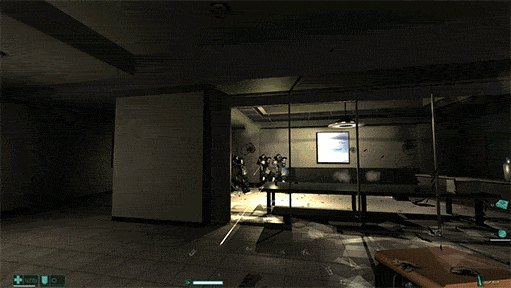
…that is not horror. It is closer to The Matrix than anything horror, and this applies to all three F.E.AR. games. Does that make them bad? No, the original F.E.A.R. is a timeless FPS classic, but none of them are horror games. The video below is as far the base game delves into horror.
Its first expansion, Extraction Point, has a few more horror sequences, but is still the same game at the end of the day; a wicked action FPS.
Dead Space series
“So scary!”
This video game myth is similar to the previous two. All three Dead Space games are referred to as top quality horror games, the franchise is considered to be one of the best horror franchises out there. The problem is, they aren’t really horror games at all… they’re just third person corridor shooters.
Once again, you play as a heavily armed Gears-of-War-like protagonist, blasting your way through finely lit corridors (but there are some that are actually dark!) taking out rather generic enemies. Like with the Call of Duty games, they make one or two levels with cool set pieces, advertise it in all of the commercials and trailers to make it seem like this is the entire game.
Horror games need chilling atmosphere to go with it, but for the Dead Space games, their “atmosphere” is corridors with a few blood splatters on it, or a few scripted gory scenes. But they show these scenes in the trailers non-stop, and this is how they sell you horror games. There’s no real horror emphasis at all; they don’t make the player feel helpless, the world isn’t disturbing or immersive (especially due to the repetitive claustrophobic environments, not that claustrophobia was used as a tool to induce fear either), the game isn’t challenging or intense. Not once did I feel any anxiety or fear of what was to come next. You just blast your way through the game like any other generic shooter.
PC Gaming costs a fortune!
“I can never afford a gaming PC”
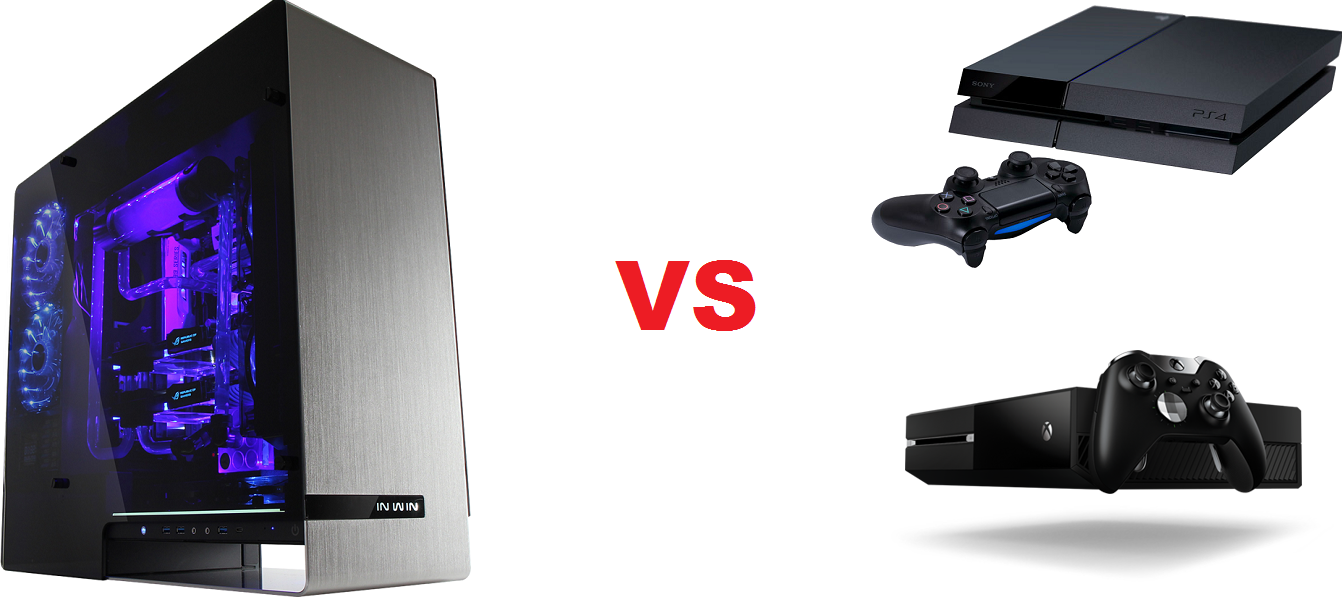
This myth is part of a bigger problem; one that has its own article here. But we’re narrowing it down to the common myth that PC gaming is much more expensive than console gaming. We’re going to stick to modern examples here: the XBOX One retailed for $500, while the Playstation 4 debuted for $400. Can you build a gaming PC for this price? Certainly. Can you build a superior gaming PC for this price? In terms of hardware specs, overall yes. You can build a superior gaming PC for $500-$600. But any gaming PC is superior due to functionality and the wider selection of games on PC.
That’s not a significant price difference… as little as no difference at all ($500 vs $500). And no, you won’t need to upgrade your PC constantly either. That’s a related common myth. All of this crap is dispelled in the aforementioned article. Build one good PC for a bit more money than one console, opposed to getting a new console every generation. You’ll actually save money in the long run.
Let’s not forget that games cost much less on PC. Chances are you’re spending $60 for almost every console game, excluding taxes. On PC, stores like Steam, GreenManGaming, Humble bundles/humble store, and GOG have excellent sales. For example, I got the entire Grand Theft Auto franchise (before GTA V released) for $12.50 on Steam. Recently Steam offered every single game and DLC from Tripwire Interactive (before Killing Floor 2 and Rising Storm 2: Vietnam released) for a mere $25. You can often get new games for $45-50 opposed to $60 on GreenManGaming, less on stores like G2A.
Half-Life inspired everything!
“None of those games would exist without Half-Life!”
The Half Life franchise is one of the most famous shooter series, and with good reason It began in 1998 with Half-Life, but it was really Half-Life 2 in 2004 that raised the bar in just about every way for shooters: character focus, diverse gameplay, scale, length, attention to detail, and style. Few shooters match HL2 and even HL1 today.
People even give HL2 a little bit too much credit, by saying that any other single player shooter today wouldn’t exist without HL2. Sure, HL2 did raise the bar, but hardly any other game tries to be HL2. Not much uses its formula, and there are dozens if not hundreds of single player FPS games since then that were not inspired by HL2’s design. There’s a big difference between referencing and paying respects to HL2, which games like S.T.A.L.K.E.R. Shadow of Chernobyl and Penumbra have done, versus having clear design inspirations from HL2.
Looking at newer single player shooters like Metro 2033 and Metro: Last Light, they clearly were not inspired by HL2’s style or design. They were inspired by HL2’s success and impact on the industry, however, but Metro is not meant to be similar at all. They had their own very clear ideas when making Metro, they weren’t trying to make a game like HL2. The same applies to most other single player FPS games. Therefore, it’s safe to say these games would exist regardless of Half Life’s success. They’re completely different games. Plus, story driven games were continuing to grow during the period in which HL2 was released, so really someone else was bound to make a story driven shooter eventually. Not that Half-Life 2 is a particularly strong story-driven game either, because it isn’t.
We’re not downplaying HL2’s innovations and impact either, it does belong in the video game Hall of Fame. But to say that every other single player FPS wouldn’t exist without HL2 is malarkey, considering the fact that most other single player FPS games use a very different formula.
Mass Effect 3 has the worst ending ever!
“The ending ruined the whole series!”
We’ve seen this everywhere. Mass Effect 3’s ending is one of the most controversial things in video game history. Beware of some spoiler alerts on this page.
There are a few reasons why people were upset with the ending. The main reason is of course bandwagon hate. Beta and omega gamers just follow what everyone else is saying in order to fit in, so they jump in the mix and say Mass Effect 3’s ending sucks without being able to come up with a reason of their own.
Another very common thought about ME3’s ending is that it didn’t explain enough. This actually is true if you played the game before any of the DLC came out. However, with the release of Leviathan, a paid DLC, and Extended Cut which is a free DLC, this complaint is pretty much invalidated. Yet people will still cite this as a reason for hating the ending, but these are people without any imagination and they’re just desperate to come up with any reason. They complain about the most trivial things not having an explanation. “They didn’t explain how the Star Child was built into the Citadel in the first place! Game sux!” This is something that isn’t even relevant to the message ME3 (and the rest of the trilogy) is trying to convey, it’s just a minor detail. Again, they just need a reason to back up their bandwagon hate, and/or they have no imagination at all. These are the same type people who hated the ending of Inception and Penumbra: Black Plague, because they’re somewhat ambiguous. For such small minded people, ambiguous endings are a no-no. They need answers for everything, leaving something to the player’s imagination isn’t compatible with them since they have no imagination.
But keep in mind that ME3’s ending isn’t even that ambiguous. Pretty much every important question (key word is important) is answered. It’s not Inception, ME3’s ending doesn’t wreck your brain. But it doesn’t answer every unimportant question like people demand, hence the outrage.
Another silly and very common reason for the hate for ME3’s ending is that none of them are happy endings. They wanted to ride off into the sunset with their romance choice, they wanted blue babies (if they romanced Liara which most people did). You’d think only teenage girls would complain about this but… nope.
But hey, there are some more valid reasons for hating ME3’s ending than the ones given above. Another reason people give is that ME3’s ending is a “button press” decision. Basically, you’re given four choices at the very end, and choosing one initiates a different ending. These choices aren’t affected by anything prior, and the ending you get is determined by only two things: which of the four choices you decided on, and your Galactic Readiness level.
This complaint has more credibility than the others. Essentially these people want an ending that’s the result on the accumulation of all your decisions, like Dragon Age: Origins though usually these people want every decision from all three Mass Effect games to contribute to the ending. In simpler terms, most of these people just wanted an ending slideshow that described the result of every major decision made in the franchise. For example, if you wiped out the Geth, these people want a slide in the ending that explains the result of the Geth being wiped out. Again, this relates back to people having no imagination and demanding to have closure on every single subject. Kids these days just hate ambiguous endings. They also forget that there is another Mass Effect game in the works.
The aforementioned reason also relates to the common notion of people only caring about the ending. They play games only for the ending, not for a combination of the journey through the game as well as the ending like they should. To them, only the final 20 minutes of the 130 hour trilogy matters. These people hardly notice how the Mass Effect trilogy responds to your decisions; all they want are decisions that result in new ending slides, like other RPGs. What they don’t realize is how Mass Effect has far more effort put into it than other RPGs; decisions create chain reactions that are felt throughout the series, from one game into the other. ME3 is the last game in the trilogy (the next Mass Effect games will be a different series or just a standalone game), so it doesn’t have anything else to affect but itself. Even then, the decisions generally do alter the course of ME3; they even do give you different ending slides, just not that many. But to these people, only the ending matters. Only the last 20 minutes of the 130 hour trilogy matter, the rest of it was just a chore to them. Of course, we’re not telling anyone to disregard the ending, we’re simply telling them not to disregard the other 130 hours of the Mass Effect trilogy.
What people don’t complain about enough is the reused plot twist revolving around one of the characters. The same twist was used in ME1. This was an unoriginal and stale move by Bioware, this is what people should be complaining about if anything. Then again, if they do complain about it, then they must also complain about Bioshock reusing the twist from System Shock 2 (which nobody ever does).
Some people, like myself, found the ending to just feel a bit awkward. The four choices offered at the end take you by surprise, which in itself is fine, but some people just would have written a different ending. This is fine, it doesn’t really point to any flaw in ME3’s ending, it’s just a different opinion. You can’t please everyone. But most of the controversy around ME3’s ending come from people who didn’t play the game with Leviathan and Extended Cut, and most reasons are just silly. Not liking the “button press” style of the ending is a good enough reason, though I have yet to see anyone come up with an alternative concept that avoids this.
I only want games from 2014 or later!
“Recommend me a game pls from 2014 or later!”
This mindset is some kind of memetic plague, I swear. Most gamers are young teenagers or act like such, but many haven’t been gaming for too long. It’s very common to see people ask for game suggestions, but make a requirement such as, “It must be from 2014 or later.” This actually leads to two video game myths: games from before 2014 (or a neighboring year) have “bad graphics” and games from before this time have clunky outdated mechanics.
When this article was first written, we wrote 2010 instead of 2014. But time flies and this article has been updated appropriately.
Believe it or not, there have not been massive visual revolutions since 2007, the year Crysis was released (pictured above). Many PC exclusive games from 2007 and even earlier have more dynamic lights and dynamic shadows than modern games, as well as more physics interaction. The main visual innovations since then have been tessellation, photogrammetry (but this is scarcely used), and maybe contact hardening shadows.
What about those screenshots? Those have got to be from a very recent game? When in fact… it’s from a 2004 game called Half Life 2. Maybe you’ve heard of it? Those screenshots were taken using FakeFactory’s Cinematic Mod. So plenty of older games look fine, comparable to modern games even. Have a look at what has been done with Deus Ex (the original), a 2000 game. It looks old, but not from 2000, and has many modern effects thanks to its DX10 renderer added by Revision mod.
And how about Thief Gold, a 1998-1999 stealth game that demolishes almost all other stealth games in gameplay design and level design? See what mods have done to its graphics. These screenshots come from here.
But of course, even more important than graphics are the superior gameplay and level design. The latter illustrated below.
Technical graphics fidelity is generally second to art design anyway, illustrated by this article.
There is no shortage of older games being superior to the latest AAA games in various technological aspects either, usually more important ones at that. Here are some examples:
- The combat AI of F.E.A.R. (2005), the A-Life system (open world simulation AI) of the S.T.A.L.K.E.R. franchise (epitomized by Call of Chernobyl mod).
- The physics of most older PC exclusive games, which greatly influence and improve gameplay of course. Some of the best examples are Dark Messiah: Of Might and Magic (2006), Half-Life 2 (2004), F.E.A.R. (2005), Crysis (2007), even the multiplatform Red Faction games, and going as far back as Half-Life (1998), the classic Thief games (1998-2000), Deus Ex (2000), and countless others.
- The particle effects of F.E.A.R. (2005) and Crysis (2007), which far surpass almost all other games leading to more visually pleasing shootouts especially in the former (example). Things like volumetric effects and physics based smoke/dust in Crysis, 3D volumetric clouds too, and more.
- Most or all lights being dynamic opposed to static, and casting dynamic shadows. This was also more common in classic PC games than today’s AAA games.
- Some of the advanced lighting features of DOOM 3 (2004) like its additive blending.
- The graphical fidelity and physics of water in all Source engine games and Crysis (2007).
- The once standard moddability of PC games and automatic downloading of mods to clients in multiplayer games.
- Sound processing. More on that below.
What people often fail to mention is sound effects, which are also important to immersion, and in this regard PC games from the late 1990s to around 2008 trounce today’s games overall. This is because these games used either DirectSound3D or OpenAL sound APIs which were inherently superior for the following reasons:
- Object oriented sound processing within virtual 3D space. Every sound has its own X, Y, Z coordinates, and was processed with a superior 3D HRTF for both stereo and surround systems.
- Building upon the fact listed above, this results in binaural sound simulation for headphone/stereo/2.1 users, and superior surround sound for surround users.
- Dynamic environmental sound effects were more advanced, via Creative’s EAX technology and its successor OpenAL EFX. This allowed for multiple simultaneous sound environments, up to 128 voice channels processed via hardware, environmental occlusion (sound dynamically passing through objects and being dampened/impacted by it), dynamic echoes/reverb, dynamic sound distortion, dynamic flanging, dynamic ring modulation, and much more.
But more important than graphics and sound is gameplay; are games from 2007-2010 clunky? Well, some are. Some recent games are clunky and feel dated, like The Witcher 3. Games from after 2014 don’t necessarily feel less clunky than those from prior. Don’t make silly excuses to miss out on some of the best games of all time.
Steam is malicious!
“That game uses Steamworks? Forget it then”
This myth usually spawns from the frail minds of older gamers who are unable to accept change. These people really don’t have a firm grasp of how the internet works these days. They’ll read about how Steam can collect data from your computer (if you voluntarily do their surveys), or how Steam games don’t give you actual ownership of the game but just the right to play it. Many of them outright state that “Steam can take away your games at any time!”

This, my friends, is called paranoia. You see it a lot with people who aren’t in-touch with reality. Steam is not going to take away your games, Steam is not a virus, Steam won’t give away your personal information to those who seek to do harm. We can’t say the same for Origin, which does seem to take away people’s games (or at least used to), but Steam does no such thing. Steam also doesn’t require an internet connection, and Offline mode works great, contrary to what many of these people believe.
All Steam offers is convenience; downloading games before they release, a way to communicate and share things like images or videos, a way to easily use mods without manually installing them, a much easier way to join friends in-progress, a way for people to make their dream games come true, the list goes on. We’re not Valve fanboys, I can make an article slamming Valve for the direction they’ve gone in the past few years and how they haven’t made a noteworthy game since 2004. But Steam is not malicious, nor is it the only platform which is another myth. If you don’t want to use it that’s fine, but making up these superstitions and myths is just silly.
Steam is the only way to go!
“I only buy games from Steam.”
This is bad for PC gaming because it is supporting a monopoly. Competition must be supported for the market to be more fair, and thankfully quality competition exists like GOG.com, which is DRM free and has a unique library including some of the best games of all time and other lesser known but wonderful games.
And of course Origin is the only way to buy EA games, and Origin has improved substantially to the point where it is actually a good program now.
Naughty Dog makes the best games ever!
“Naughty Dog unrivaled best developer ever!”
Naughty Dog is a developer that makes games exclusive to Sony platforms. What they’re most known for are the Uncharted games and The Last of Us. Everyone is entitled to their own opinion, though the myth comes from Sony’s camp saying that these games are truly something special and revolutionary. Nobody else comes close to them! Yet… they are only ahead of the competition with regards to animations. That’s not to say they’re bad games, since for the most part they aren’t, but they don’t have anything to put them at the top of the food chain.
There’s a decent breakdown of The Last of Us written here, explaining how it isn’t anything special or revolutionary. They don’t bring forward any new genre-defining ideas, and they’re riddled with flaws that you can pick apart all day. Sure, every game has flaws, but these have a LOT, from the unlimited respawning enemies in the Uncharted games to an awfully high bullet count, overly linear level design in all of them, horrible stealth implementation in The Last of Us, oversimplified gameplay in TLoU that isn’t intense, the list goes on. But they aren’t really letdowns… they just have typical consolized one-dimensional gameplay combined with above average (though also overrated) storytelling.
The Uncharted games, The Last of Us, and similar titles such as Tomb Raider and Metal Gear Solid 4, can be broken down into this formula:
Generic linear action sequence -> Cutscene -> Generic linear action sequence -> Cutscene
That formula goes on until the ending credits roll in. Their gameplay feels 10 years older than they really are, and all they comprise of is shooting your way from cutscene to cutscene, perhaps with some contextualized climbing! The generic linear action sequences are all tediously repetitive and unoriginal, offering nothing to do but destroy all enemies before you, or in some cases, solve a puzzle or try to sneak out in the open. There’s hardly any detail in the level design, and the gameplay is archaic.
They don’t even try to be amazing games, they try to be movies, leaving the player with no influence over the story or characters. This prevents them from being at that top level, and so does the lackluster gameplay and forgettable atmosphere without special attention to detail. Movies will always be better movies than games, but Naughty Dog’s failure to realize that makes them poor game creators.
For a bigger and better writeup on this subject, read:
Call of Duty is competitive!
“1v1 me n00b”

This video game myth turns up often. Simply put, people consider Call of Duty games to be competitive. The problem with this is… how is it competitive when spawns are so random, guns have almost no recoil and perfect accuracy, perks skew the gameplay, and streak rewards do most of the work for you?
These people don’t even understand the game they’re supporting: Call of Duty multiplayer since Call of Duty 4: Modern Warfare is designed so anyone aged 8-80 can pick up the game and do well. It’s designed for people to just sit down on the crouch, jump into a game, run around and shoot some people. It wants go give everyone an equal opportunity to do well. All you need are knowledge of the maps, good reaction times, and good hand-eye coordination, and you’re the best.
If you want to experience something like Call of Duty but actually competitive, play any Counter-Strike game, Day of Defeat: Source, Insurgency, or Day of Infamy. If you have no experience with real competitive shooters then you may find yourself uninstalling them after getting obliterated again and again.
The Witcher games are the ultimate RPGs!
“Dynamic narrative! Grey decisionz!”
This myths stems from gamers not understanding RPGs. They don’t know what a Role-Playing Game is, because they are rare in the AAA game market aside from JRPGs which are completely different.
Role-playing video games are inherited from pen and paper RPGs. Simply put, a role-playing video game is a video game with role-playing, and the concept of role-playing is derived from pen and paper RPGs. Thus, to better understand RPGs, read the core rulebook at least one pen and paper RPGs, like Dungeons & Dragons and RuneQuest and possibly others.
In short, role-playing is the ability to create or assume, and tailor a role within a world or story. To do so, in some way, shape, or form the player must be able to control and define his/her character’s innate physical and mental/personality attributes, as well as alignment. This does not necessitate creating a player character from scratch, nor does it mandate a clearly defined alignment system mechanic. Through dialogue and actions, the player will further define these things about the player character while advancing through the world or story, gaining experience along the way. The goal is to allow the player to define who their player character is, and journey through a world that reacts to your unique player character and your actions in various ways.
Do The Witcher games fit that criteria? Nope, they are almost the opposite. You play as a predefined character, defined by novels no less, so you cannot really change who he is, you just control his whims. An RPG must allow you to define who your character is, in a real RPG people can play as a totally different person (even if it is a loosely predefined character like The Nameless One from Planescape: Torment), but not in The Witcher.
Battlefield series
“The savior of FPS and PC gaming! Ultimate tactical, strategic, and realistic warfare!”
I’m killing several birds with one stone here, since there are quite a few myths surrounding this franchise, specifically since Bad Company 2 and Battlefield 3 which bolstered its popularity, but this myth survives to this day.

I’ll address the smaller, less significant Battlefield myth first; those that say it’s some kind of technological prowess for its destruction. People throw around the term “Destruction 4.0!” as if they’re parrots. All Battlefield has is model-swap and very little, if any, procedural destruction. Those collapsing buildings always fall down the same way. Walls chip away far too much; it’s unrealistic and it looks fake. Look at what mere bullets do to this drywall.

It’s mostly scripted, model-swap destruction and not physics-based procedural destruction. BF3/BF4 destruction is very old tech, not much different than Red Faction from 2001. If you want to see impressive destruction, or physics in general, check out PhysX tech demos or mess around in the free PhysX SDK. Or try the free game Warmonger: Operation Downtown Destruction which uses PhysX for a high amount of procedural destruction. Red Faction: Guerrilla also demonstrates much more advanced destruction.
The most common video game myth however is that the Battlefield games are tactical, strategic, and/or realistic shooters. People who call it realistic are just clueless. The ballistic system and weapon/equipment handling are all very arcade-like. The fact that you can have a team of 15 snipers or medics is not realistic. Vehicle operation with two guys doing everything is unrealistic. If you want realistic, you want ArmA.
Or if you want greater realism and hardcore gameplay in a similar type of game, play Battlefield 2: Project Reality, Squad, Rising Storm/Red Orchestra 2, and Rising Storm 2: Vietnam.
Those who call it tactical and strategic also just lack exposure to actual tactical, strategic games. Come on, you guys haven’t played Rainbow Six? Get Raven Shield from Steam to see what a tactical shooter is like.
People also call Battlefield strategic, as if there’s some sort of greater scheme or complex planning behind it. The only way you’re going to get this is in a private clan match, probably in BF2 + Project Reality once again. Even then it’s hardly strategic due to the simplicity of the game modes, which revolve around killing and holding points, or killing and defusing bombs. The most strategic game mode in Battlefield history is Titan in Battlefield 2142, but it is still too simple to be called a strategy game. Level design doesn’t emphasize strategic gameplay either, especially in Battlefield 4.
If you want a strategic PvP shooter, you want Natural Selection 2 or Crysis/Crysis Wars. Let the videos do the talking.
Battlefield games are kids games compared to this. Or even not compared to this, they are aimed at children anyway in this day and age. Like Call of Duty, Battlefield since BC2 or even BC1 are designed so that anyone can pick up a controller and do well. They’re console-focused games: what happened to the mod support from the PC exclusive titles? Since BF3, the franchise is praised as a true PC series, despite the removal of mod support, despite the forced Battlelog integration (which was horrible when BF3 was new), and despite the fact that BF4 was one of the most unstable releases in video game history, crashing often for both players and even servers. Any non-Battlefield game would be ridiculed and uninstalled instantly if it crashed more than once, just look at Skyrim which is significantly less buggy and only crashes when using incompatible mods.
Another Battlefield myth is that it has a more mature, adult community especially compared to Call of Duty. However, simply jump into a server and witness how this is completely false. All you’ll find is people running around doing their own thing (so much for teamwork), playing with no common sense, people being more predictable than AI, squeaky voices coming from VOIP, and the same childish insults being thrown around just like you’ll find in Call of Duty, Crysis 2, Crysis 3, Medal of Honor games, Killzone, and other casual shooters. More and more kids are jumping on the Battlefield bandwagon every day. Even elite PC multiplayer games not designed for children, like Arma 3, are plagued with immature children, but nothing can be done about that.
The worst part about it is, the Battlefield community thinks they’re superior and more mature… for playing one video game instead of another? Not to mention their reasons are totally false; they believe they’re superior for playing a more team-based, tactical, strategic, and realistic game (than CoD, since that’s the only other game series they know), when in reality Battlefield is none of that.
Nobody admits that they prefer Battlefield because they’re casual and mindless games, those who believe these myths actually demonstrate some of the most effective brainwashing in history, putting them on par with religious zealots or cultists. It’s quite astounding really, it should be noted in textbooks. These myths are proven false right in front of them, yet they believe them otherwise. The second these people try an actual tactical, realistic shooter like Rising Storm, or strategic shooter like Natural Selection 2 or Crysis Wars, they quit because they don’t really want such gameplay. Battlefield players just want to run around, drive cars, jump off of buildings, and blow stuff up.
All of this criticism extends to the recent Star Wars: Battlefront, which is not a real Battlefront game but just Battlefield with Star Wars skins. There is no need to play Battlefield anymore, they are bad for the industry since they prohibit dedicated servers (forcing you to rent their own) and modding, plus there are very similar games with more or less the same game modes and more, with superior mechanics and more and better content including mods. Those games are Squad and the Rising Storm/Red Orchestra franchise.
Multiplayer Player Count
“If it has less than 30,000 players, it is unplayable!”
Many gamers share a mindset like this, even if not precisely 30,000 players. This mindset is born from the fact that your average gamer merely follows the herd, and as a result they find themselves only playing top selling games with a massive player base. So when they come across a multiplayer game (NOT an MMO) with only 3,000 active players per day or so, they think that is too little making the game unplayable. But if such people had any thinking capacity, they would see that makes no sense.
Again, we aren’t talking about MMOs here. People are turned off by simple multiplayer shooters averaging 3,000 players per day as if it’s too little. How is it too little? Games like Battlefield and Call of Duty do not have that many game modes, and they do not allow for more than 64 people per server. 3,000 players is enough to fill 46 servers if the max player limit per server is 64 players, with almost enough to fill a 47th server. You are one person, you can’t possibly play in 46 servers at once.
Even a mere 1,000 players is enough to fill 15 such servers. Is this an ideal player base? No, but it is serviceable for most non-MMO multiplayer games. The only exceptions would be games with dozens or hundreds of total conversion mods like Unreal Tournament 2004 or most of all Garry’s Mod, since these are effectively many games in one.
Open World
“Tomb Raider gr8 open world game! The Witcher 2 semi open world!”
We all know that most current-day gamers don’t know what RPG means, but it turns out that many of them also don’t know what open world means. Everyone seems to confuse “open world” with “sandbox”, and many don’t know a linear game when they see one.
The term open world is self-explanatory: it means that the game’s world, nearly every single level, is openly accessible. The levels aren’t accessed in a line, like linear games, but instead the player can freely roam to them. Opposed to having only one way to advance and approach, like linear games, open world games provide almost an unlimited amount. Examples of true open world games include the Grand Theft Auto series, The Elder Scrolls series which was a true pioneer in open world gaming. There’s also Fallout 3, Fallout: New Vegas, Sleeping Dogs, Mafia 2, Far Cry series, and much more.
Open world is commonly confused with sandbox, which is a game that provides freedom within each level, but progression is still mostly linear. An example of a sandbox game is Crysis: the maps are open, there aren’t really any invisible walls except for the borders. You get plenty of ways to approach objectives, but like a linear game, you’re trapped within one level at a time. There’s only one entrance and one exit, and you can only leave once you’ve finished all objectives. So in a way, it’s a hybrid between open world and linear; level design is open, but you advance in a linear fashion.
Linear games are the smallest and most simple: the player advances almost in a straight line, from point A to B to C. But unlike sandbox games, each of those points isn’t open; they’re small levels with little to do. There’s little to no exploration. Some recent, popular linear games include the Bioshock franchise, The Witcher 2, Uncharted series, The Last of Us, Tomb Raider, Metal Gear Solid franchise, and Dead Space franchise.
Some games also make use of hubs, which is one area that leads to many others, or just a place to relax, get the latest news, talk to people, complete side quests, and similar things in-between missions. Hubs can be found in the Amnesia and Penumbra games, Deus Ex games, Dishonored (which is also a sandbox game), Underhell, the first two Turok games, and more. They were more popular 10-15 years ago than they are now, but they’re still around. Hub-based games still only have one way forward, but typically you have to complete objectives in several different areas in order to move forward. You just get to choose the order in which you complete these objectives.
Despite these very clear and obvious definitions, people still don’t seem to understand. Tomb Raider (2013) is often said to be an open world game, when it’s mostly a linear game. Some people go as far as to call The Witcher 2 “semi open-world”, which is one of the most absurd statements ever. The Witcher 2 is a very linear game with tiny maps that have invisible walls everywhere, minimal exploration, and you advance linearly too. The only exception is that The Witcher 2 provides two linear paths, depending on one choice you make. Regardless of the path you choose, you end up going down a line, and each location is, once again, very small with invisible walls everywhere. It doesn’t get much more linear than this.
Linear doesn’t mean bad, since often the term has a negative connotation to it. One of the reasons people avoid calling their favorite games linear is because they think it’s an insult. Linear games are smaller and more limited yes, but many games are meant to be this way.
It’s also baffling what people consider to be a “good open world”. Lots of modern day gamers think that Far Cry 3 and Just Cause 2 have the best open worlds. This is subject to opinion of course, but I’d like to elaborate on what separates those games from other open world games like The Elder Scrolls series and recent Fallout games.
The open world level design in Far Cry 3 and Just Cause 2 consists of using vehicles and causing mayhem. The only real activities to do include shooting things, blowing up things, and crashing vehicles into things. They’re basically just playgrounds of destruction; they aren’t about making detailed, lively, and believable worlds.
The Elder Scrolls games, Fallout 3, and Fallout: New Vegas are very different open world games. They provide remarkably detailed worlds and are about exploration. You’ll never know what you find when exploring, these worlds are filled with massive dungeons with very dynamic and unpredictable spawns. Every location is impeccably detailed with personalized belongings and/or hidden side quests, in order to feel like a real world. Some of these, especially Fallout: New Vegas, seek to provide a world that responds to your actions too, since these games are also RPGs.
Grand Theft Auto, since GTA 3, is all about making a somewhat believable, but also somewhat outrageous and funny modern day world, filled with the things you can do in every day life. GTA V excels at this more than anything else in the franchise. Other games have taken inspiration from GTA and tried to do the same thing, like Sleeping Dogs and Mafia.
It’s quite obvious which open worlds have more effort and attention to detail put into them, and which ones provide the most diverse gameplay. We’ll leave you with a hint: it isn’t Far Cry 3 or Just Cause 2.
The Classics were all better!
“All new games suck! All of the classics were better!”
You don’t have to look hard to find comments like these. There’s actually some truth to it, but it’s an exaggerated, generalized statement that just looses merit since they’re painting the entire gaming industry with a single brush.
It is true that the majority of mainstream games today are dumbed down console games, designed so that everyone aged 8-80 can play it without being overwhelmed. It is also true that the hailed classics on both consoles and PC were not designed this way: they were designed to be challenging, to make you think, and to cater to a specific audience and perfect what they attempted to do.
However, every modern game isn’t as oversimplified and dumbed down as the Call of Duties, the Battlefields, the Dead Spaces, the Naughty Dogs, and all the other similar games that actually do fit the aforementioned criticism. Innovation and ambition still exist, although perhaps not for every genre. RPGs in particular are only objectively dumbed down and lesser compared to the best from the past, and only a few excellent multiplayer shooters remain today while the majority are console games with only paid rental servers or no dedicated servers at all and no modding.
But other genres are less troubled and innovation and ambition can be found within them, and new genres and subgenres have been made in the recent era, like persistent world survival (pioneered by DayZ).
But again, it’s a mixed bag. You can find elite games from most genres both from the past and the present.
PC has no exclusives!
“Consoles are for exclusives, PC is for performance ![]() “
“
This is yet another very common and very misguided myth. Many console gamers, and many people who claim to be PC gamers tend to say that PC doesn’t have many exclusives, and/or a strong selection of exclusives, while consoles have amazing exclusives. Most console exclusives really aren’t anything special, as described in the Naughty Dog myth.
PC has the largest selection of exclusives. Much more than any individual console, more than any individual console generation. Nintendo exclusives consist of kids games, party games, distinct action/adventure games, and sidescrollers. XBOX exclusives are just generic shooters that are no different than ones found on any other platform. Playstation gets JRPGs, and other kinds of unique Japanese games.
And what does PC get? Most strategy games, MMO, just about anything with the word “simulator” in it (including racing simulators, flight simulators, and military simulators), modern horror games, modern survival horror games, classic RPGs, sandbox/building games like Garry’s Mod, sidescrollers, and others are PC exclusive. Many point-and-click adventure games are PC exclusive too. Lots of these actually take advantage of what PC has to offer, allowing for things like more AI on screen at once, or larger scale games in general, but also having much more functionality due to mouse and keyboard.
And on a related note, contrary to popular belief many multiplayer games on PC have a huge amount of players. Console gamers tend to think nobody plays on PC, when in reality, there are more Steam accounts than XBOX Live accounts. Some of the most popular multiplayer games (that is, most players per day) in the world are PC games like Dota 2, Counter-Strike: Global Offensive, Team Fortress 2, World of Tanks, World of Warcraft, League of Legends, and more.
So no, PC hasn’t been abandoned. I know what many of you are thinking: quality over quantity. Thankfully, PC wins in both regards.
The video above shows ArmA 3, a mil-sim that is too demanding for any console during its time. The most intense, realistic shooter ever made, from a franchise that belongs to this unique genre, all of which are PC exclusive. How about a more hardcore, challenging open world survival experience than anything on console?
Or PvP shooters that are actually complex, and not just mindless run-and-gun? Also see the videos in the previous myth.
Or a free game that blows L4D 1 and 2 out of the water, in terms of intensity.
Or the best, and some of the only recent horror games?
Or this free, unique psychological horror, survival horror, and stealth game called Underhell that happens to be one of the best games of 2013.
Or stealth games like the Thief series, or this free one that’s inspired by them.
The list goes on, but these are games that could appeal to many. Like I said, any sort of strategy game, including more strategic shooters, are exclusive to PC. There are lots of very strange and unique sidescrollers or puzzle games found on PC, indie games only have a noticeable presence on PC.
Racing simulators and flight simulators are exclusive to PC. If you’re one of those… weird people who would like games like Farming Simulator or other odd simulators, they exist on PC. You can find pretty much anything on PC, but only a very limited selection on console. Horror games, including survival horror games, are essentially dead on console while they’ve survived and advanced considerably on PC. Only on PC will you find games that makes the classic Resident Evil and Silent Hill games feel dated and beaten.
Some of the greatest RPGs of all time are PC exclusive, like the Baldur’s Gate series, Fallout series, Planescape: Torment, Neverwinter Nights series, and Icewind Dale series. Even multiplatform ones might as well be PC exclusive due to mods that drastically change and enhance them. To anyone who has played The Elder Scrolls games or Fallout 3/New Vegas, take a look at these.
PC simply has a much stronger selection of exclusives, and a much wider variety of them. The only really distinct exclusives that consoles have are Japanese games (namely JRPGs), kids games, family games/party games, and some other Nintendo games.
You’ll find much more advanced stealth games than MGS on PC (many of which are actually multiplatform), you’ll find much better survival horror games than the classic Resident Evil games on PC, you’ll find scarier horror games than the classic Silent Hill games on PC, you’ll find much better storytelling than Naughty Dog games or the MGS games on PC (most of which are actually multiplatform), you’ll find much more than just mindless shooters on PC.
Only mainstream games are worth buying!
“You mean there’s other games than BF/CoD???”
This myth really brings harm to the gaming industry and keeps it from evolving. Mainstream developers are afraid to create new IPs, and they’re afraid to innovate. Game development is very expensive, and innovation isn’t desired by the masses. For some reason most people prefer to play the same games over and over again. Therefore, mainstream developers will continue to make games that are rehashes, because they know people will buy them. The best example of this are the Battlefield and Call of Duty franchises, which are notorious for ruining the gaming industry, but they wouldn’t have done so without everyone hopping on their bandwagon.
The developers who aren’t afraid to innovate are often independent developers. They have no publisher to help fund them or advertise their product, they work on their own. They don’t make games that cater to the masses, usually they have a niche audience and look to satisfy just them.
But that doesn’t mean you won’t find great, quality indie games, or that indie games are all weird unconventional sidescrollers or something. So what will you find in the indie scene? How about a mil-sim franchise that is years ahead of it’s time that single-handedly demonstrates the evolution of gaming?
There’s also Underhell: one of the best games of 2013, and best non-RPG titles out there that’s a unique blend of psychological horror, survival horror, and stealth. Oh yeah, and that one is free. Let’s not forget that some of the best horror games of all time, notably the Penumbra franchise and Amnesia: The Dark Descent, are indie titles and easily surpass the original Silent Hill games.
Some of the best PvP shooters of all time are also indie games, specifically Natural Selection 2 and Rising Storm which are more than just mindless run-and-gun unlike Battlefield/Call of Duty.
One of the best survival horror experiences comes from a less known PC exclusive and a mod for it.
Let’s not forget No More Room in Hell, one of the best survival co-op games out there and it’s free. Killing Floor is another great survival co-op game, and it’s also an indie game. How about some very promising racing simulators? Plenty of those are indie too.
The problem isn’t just regarding indie titles; for many gamers, anything outside of EA, Activision, Sony, Microsoft, Rockstar, or Ubisoft is out of the question. A lot of these people complain about not finding the right game for them… just expand your search. Believe it or not, many of those mainstream games are actually lower quality titles. They don’t just lack innovation, many of them are more buggy and unpolished, while offering less content, because they know that their games will sell regardless and that they can pretend to patch them later. Each recent Call of Duty game just have a low quality 4-5 hour campaign with the worst stories you’ll ever find anywhere, and around 15 multiplayer maps. Battlefield 4 just has 10 multiplayer maps out of the box.
Some of these mainstream games, like the Call of Duty franchise, Battlefield franchise, Dead Space series, Far Cry 3, and others demonstrate some of the absolute lowest points of gaming. The most inferior, poorly put together, horrible jokes that are often referred to as great games. The gaming industry is really backwards; just imagine if the worst films were given the most praise, and excellent films like Schindler’s List or The Silence of the Lambs were given minimal to no praise. That is about equal to where the gaming industry is, due to the younger and more immature audience.
Most mainstream developers and publishers don’t use those huge budgets to enhance their games. Infinity Ward/Treyarch/Activision doesn’t, EA/DICE doesn’t. Why do you think they’re still using very old technology and show little to no advancements from other games from 5+ years ago? All of that money goes toward advertising, and sometimes voice acting as if anyone actually takes their single player campaigns seriously.
Rockstar is one of few drowning-in-cash publishers who actually uses it to enhance their games, as seen with their very advanced Euphoria engine, the industry-leading facial animations in L.A. Noire, or the vast scale, improvements, and actors/cameos in GTA. Bethesda and EA/Bioware RPGs are some other mainstream games that demand the budget and workforce.
Naughty Dog and Konami just use that budget to hire voice actors, animators, music composers. Ubisoft likes to use it for CGI advertising.
Expanding your search beyond the most common games will reveal bigger and better games, that are so fundamentally different than much of the rehashed mainstream garbage. By not doing this, then the industry will continue to be at a standstill with an abundance of copypasta generic mainstream games, just like you see today.
Can Video Games be Intellectual?
Video games are quite poorly received by mainstream media. Whenever you see them mentioned in the news, they’re usually talking about how video games cause violent behavior. Although there is no valid research that confirms this, we’re not going to delve into this topic. Instead, we will talk about whether or not games can be intellectual in similar ways movies and novels can be, and in the process we will debunk the common myth that says video games are nothing more than time-wasting entertainment.
To prove our point, we’re going to look at storytelling methods used in video games. Perhaps the biggest contributing factor for the closed minded thinking against video games is ignorance, and ignorance can be quite easy to cure.
Before making ignorant claims against video games, you should ask yourself “Is it possible for video games to be intellectual?”. It’s a very simple question, but if one were to deliberate over it before arguing against video games, they might find that they have no argument at all. Why wouldn’t it be possible for a video game to be intellectual in the same way movies and novels can be? What is preventing video games from telling complex, thought provoking tales that challenge the player’s analytical skills, reading comprehension, and their intellect? The answer to this simple question is, perhaps shockingly, quite simple. It is possible for a game to be intellectual in that sense. There is no inherent block that prevents them from doing those things.
This brings us to our next question: do such video games exist? The ignorance behind this question is understandable, because of the way advertising works. Most of the people who argue against video games, stating they’re mindless time-wasting entertainment, aren’t gamers (which immediately questions the validity of their arguments, if not immediately destroying any sense of validity). Lots of people first learn of a game through television commercials, posters, billboards, social media, and the like. What do these advertisements demonstrate? Let’s take a look.
Yes, those TV spot trailers do not paint the best picture for video games as a whole. But you can’t paint all games with a single brush. Those advertisements are for two of the most popular video games today: Grand Theft Auto V and Call of Duty: Advanced Warfare respectively. The Grand Theft Auto V trailer wants to inform the viewer that the game is satirical and downright silly. The Advanced Warfare trailer just shows the viewer random acts of violence. Grand Theft Auto V is indeed satirical and silly, it pokes fun at modern American culture in the most extreme, outrageous ways possible. Call of Duty: Advanced Warfare is indeed about random acts of violence. Let us move past these controversial games, and focus on ones that people should be focused on.
There are many things to appreciate about a movie, such as acting, direction, set detail, cinematography, and the writing. An intellectual movie generally tells a story that’s built upon some core idea or question. It raises other questions relating to this idea, that touch upon powerful themes that the viewer can relate to. Such a movie will also bring in supporting ideas that tie into the core themes, and these ideas and themes are often incorporated into the movie beyond the dialogue; through visual symbolism, metaphors, and the like. As the movie plays out, the viewer gets to see it unravel. This, however, demands some input from the viewer. He or she will have to do some digging, understand hints and foreshadowing, to find out the true meaning behind the movie, and to connect the dots between supporting ideas and the central theme. Only by doing this will the viewer fully understand what the movie is about. This viewer input is purely intellectual. Video games can do all of this as well.
Intellectual movies and games take an extremely high amount of effort and creativity to make, but thankfully they continue to be made. Games like that, games that focus on literacy, games that want to challenge the player’s intellect, have existed since the 1990s… perhaps even earlier. The most prominent example in the entire history of video games has to be Planescape: Torment, a role-playing game released in 1999 by Black Isle Studios. This is the most story-driven game I have ever encountered, and it is widely known to be the greatest showcase of complex writing in the history of video games[1]. It raises the question “What can change the nature of a man?” and lets the player explore the vast, unique world in search of an answer to that question while simultaneously discovering the hidden past of the amnesiac protagonist. It’s a truly magnificent, intellectual journey, especially when you see the ideas come together and when you discover how the main characters of the game tie into the protagonist’s past. Best of all, it doesn’t just raise a question and answer it, it begs the player to find an answer for themselves. There is no one right answer. Planescape: Torment demonstrates a quality of writing that you’d expect from highly praised novels, not from video games.
Games have one crucial benefit as an intellectual storytelling medium that movies and even novels don’t have: player interaction. In Planescape: Torment, you’re forced to make numerous ethical decisions that have lasting consequences. These consequences cause a ripple effect that change the way the game plays out. The consequences are mostly major, causing significant deviations in plot progression, in addition to affecting the protagonist’s relationship with various characters, and they can even result in the death of numerous characters. But these consequences also have more minor changes, like modified dialogue with side characters. This can make for a more intellectual experience than a well-written film, since these decisions require heavy deliberation from the player, and the player will have to attempt to foresee the consequences of his or her decisions.
But even Planescape: Torment is more familiar, obviously taking from other mediums like novels and of course pen and paper RPGs. For more unique games with incredible storytelling, see The Talos Principle and SOMA.
Video games can provide other types of intellectual challenges too. Chess is a game that everyone will agree is intellectual, since it demands strategic thinking and foresight. Most strategy video games are far more complex and advanced than Chess, thus requiring a greater amount of strategic thinking and planning. Chess lovers might find themselves in awe of turn-based tactical video games like XCOM 2 and XCOM: Enemy Unknown. In Chess the objective is simple and never changes: kill the king. You have to take into account enemy movements, and be aware of the unique functionality of all the different types of pieces. In XCOM, you’re in control of essentially an army. Each soldier has unique stats and different abilities. You’re in control of the XCOM headquarters, spending and allocating resources to build upgrades for your army, among other things. Missions have different goals, there are many different ways to approach missions, the game has so many more elements to take into account, and enemy movement is much more unpredictable than a board game. The greatest strategy games are virtual.
You only get out what you put in. This applies to novels, movies, and video games. Intellectual video games are indeed the minority, but they’re out there. You just have to look for them. The myth which states that games are just mindless, time-wasting entertainment should have died off well over 20 years ago. In today’s world where you can’t escape internet connections and search engines, they shouldn’t be too hard to find. Just remember GND-Tech.com, your source for gaming and technology.
[1]“Planescape: Torment for PC Reviews – Metacritic.” Planescape: Torment for PC Reviews – Metacritic. N.p., n.d. Web. 17 Nov. 2014. <http://www.metacritic.com/game/pc/planescape-torment>.


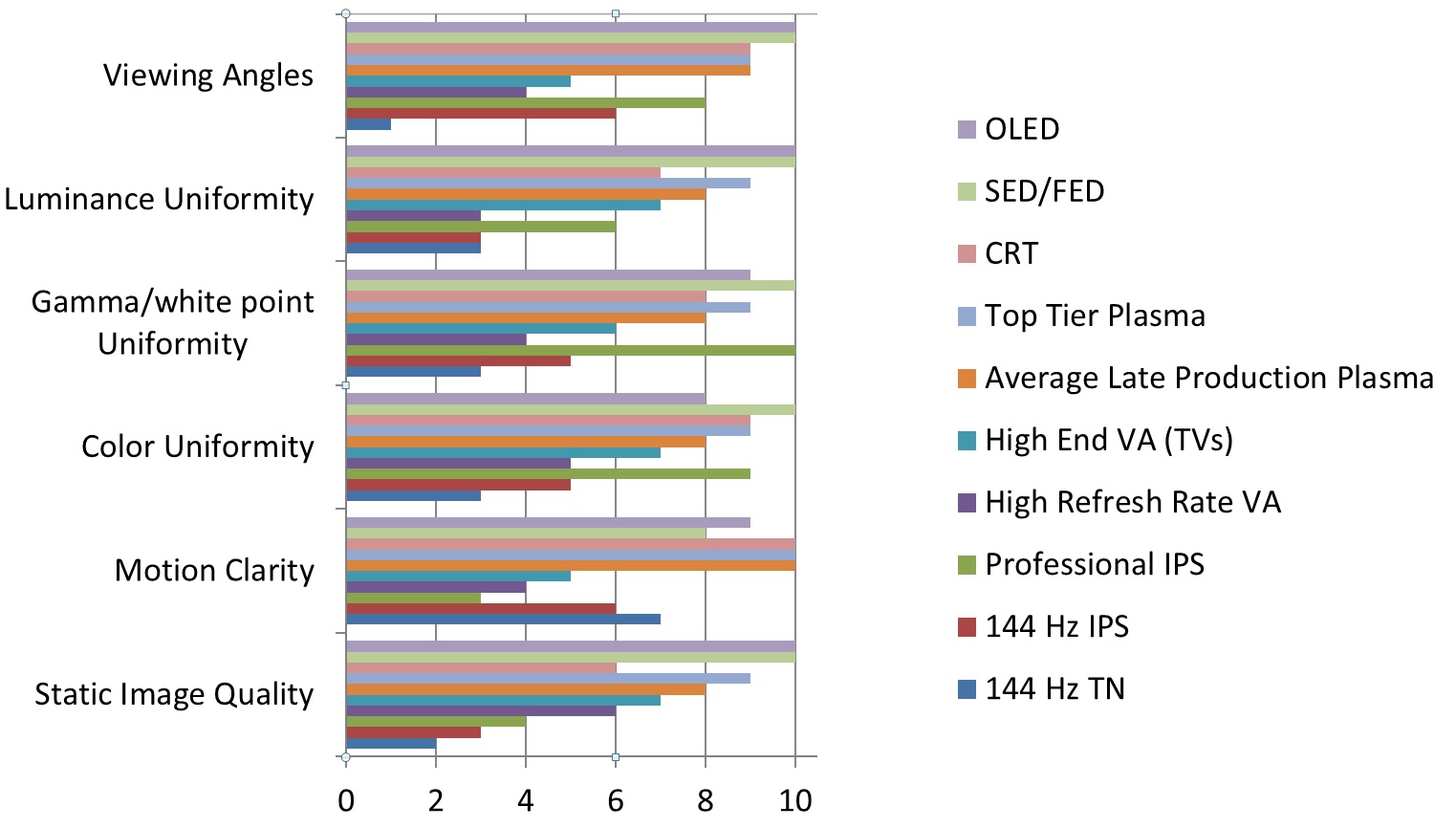









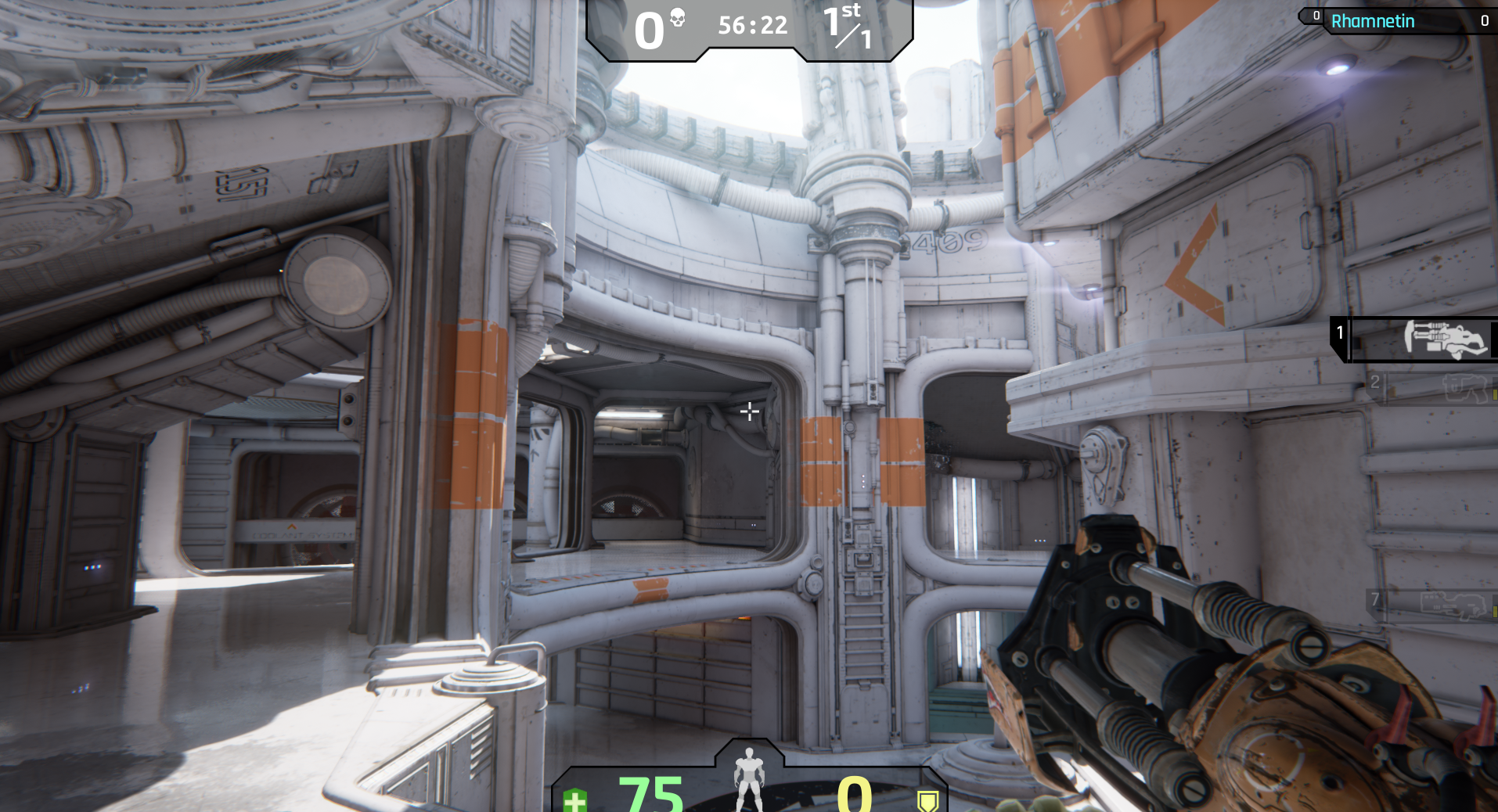
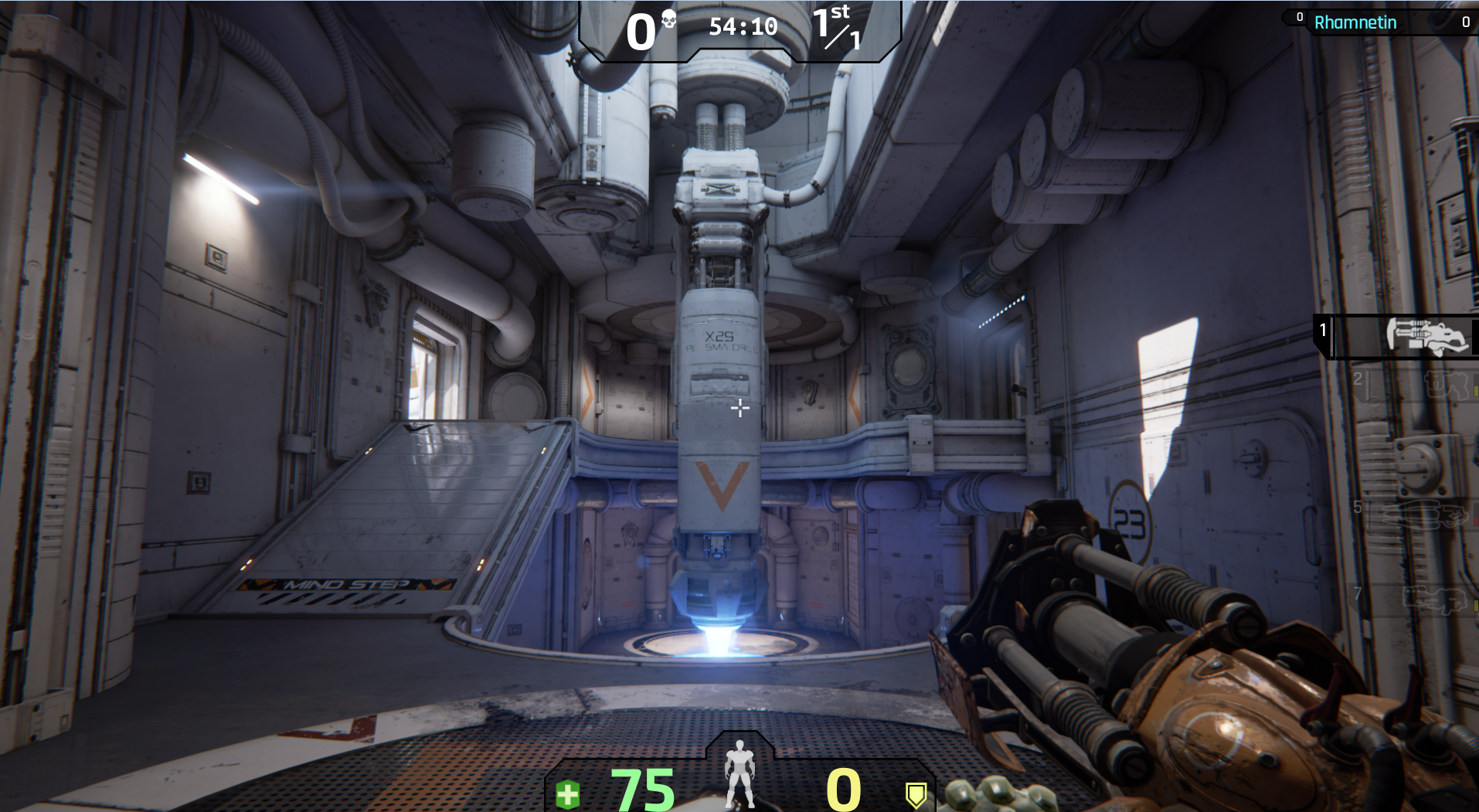

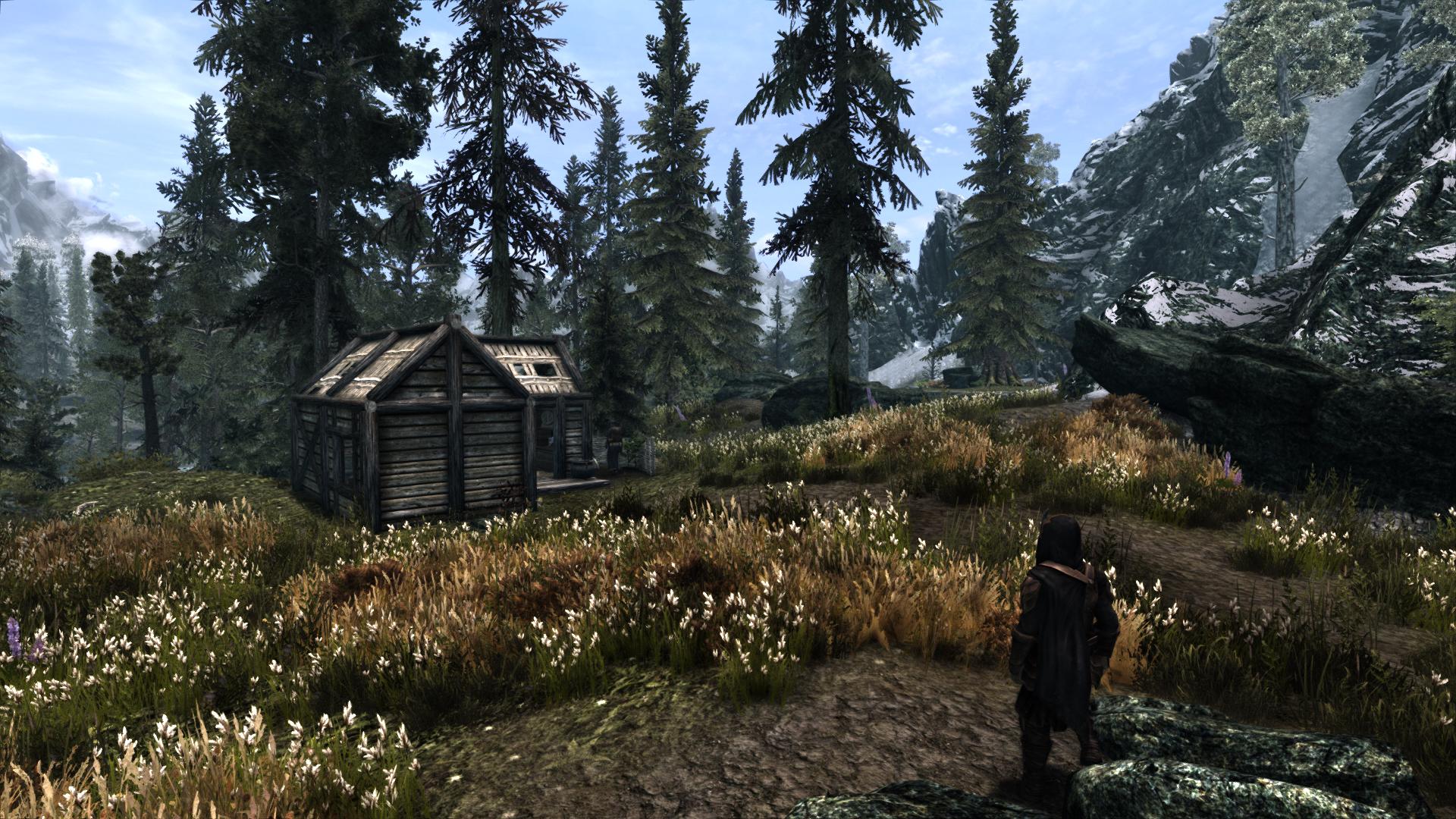












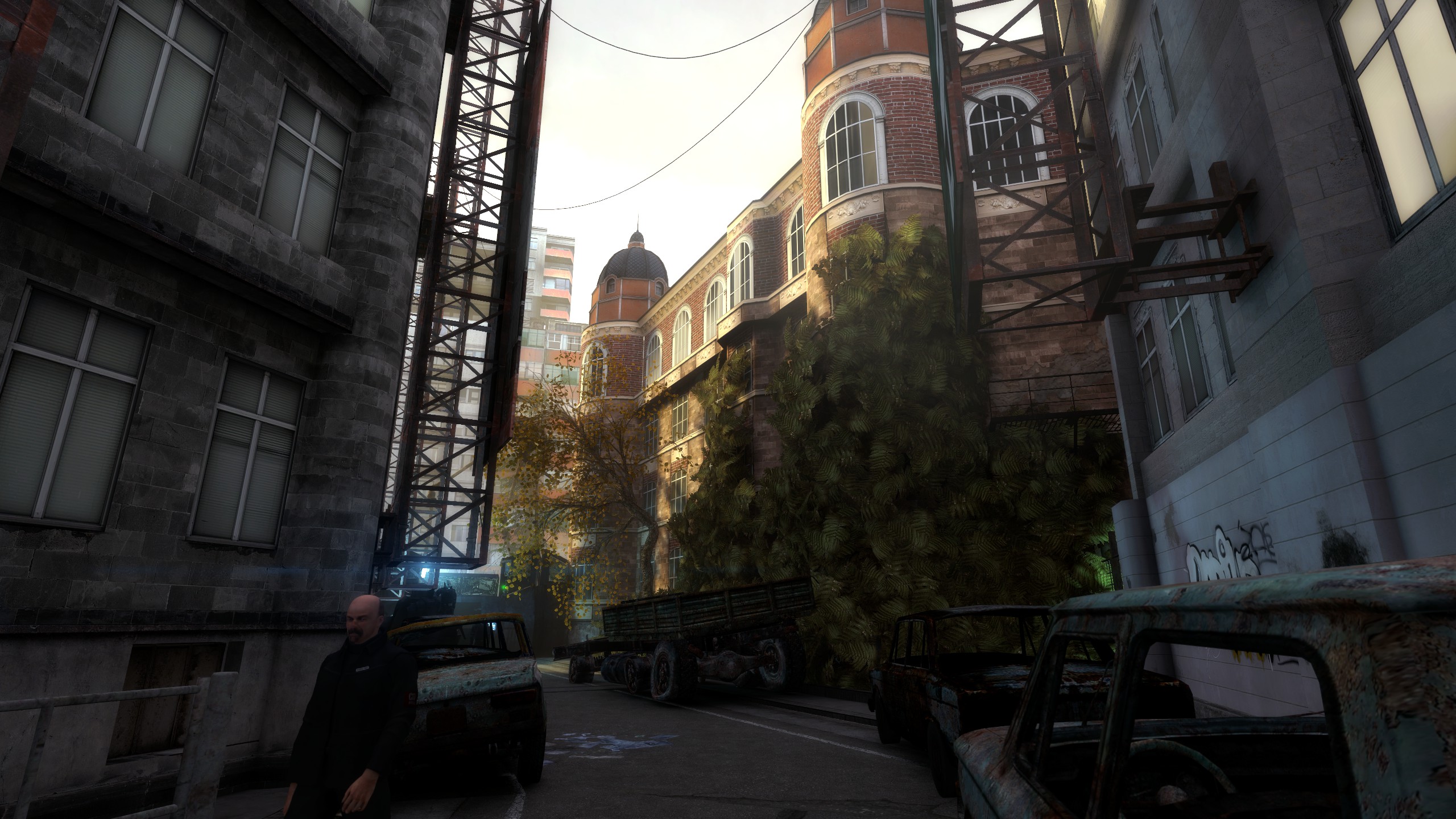
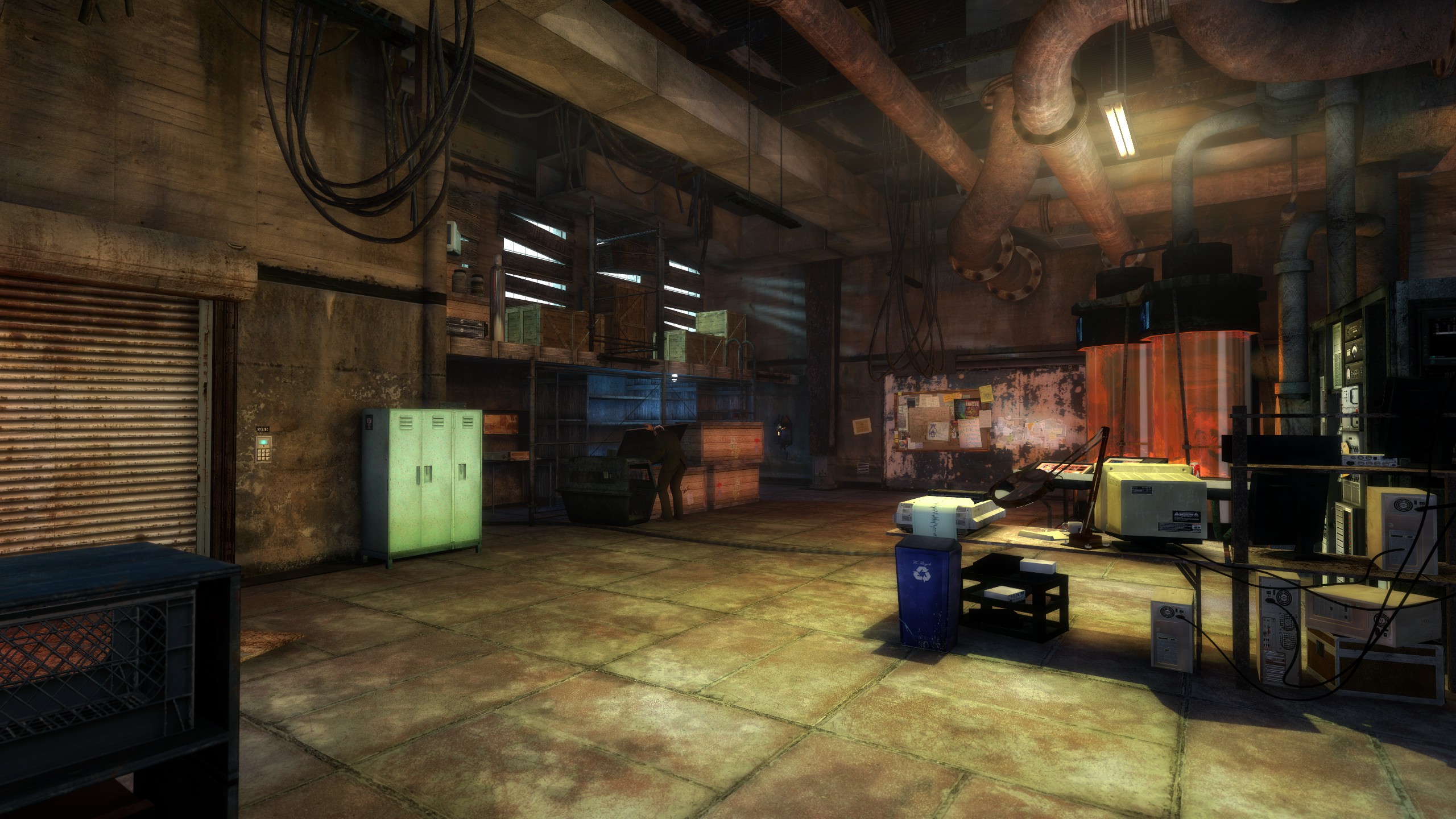
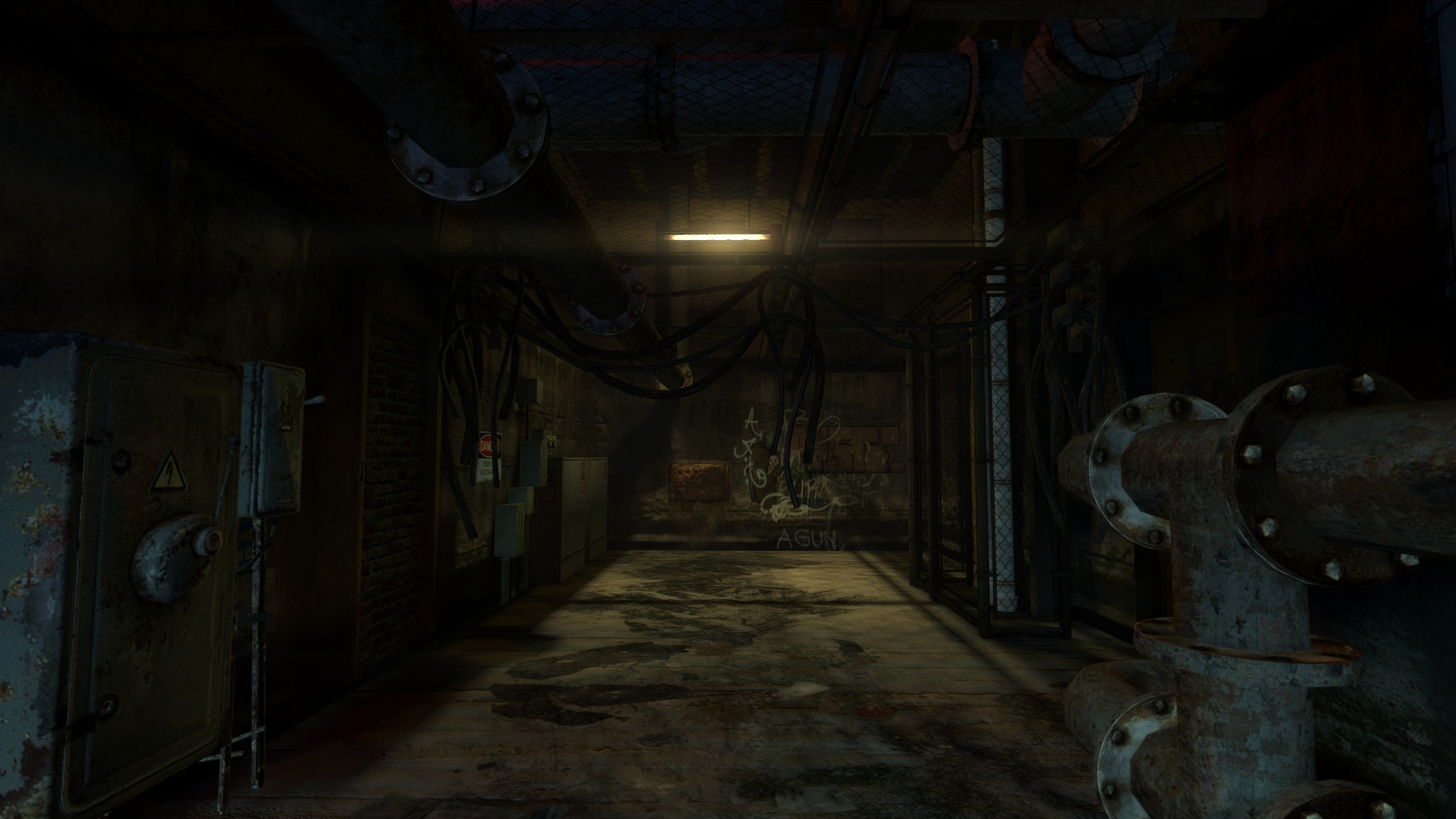

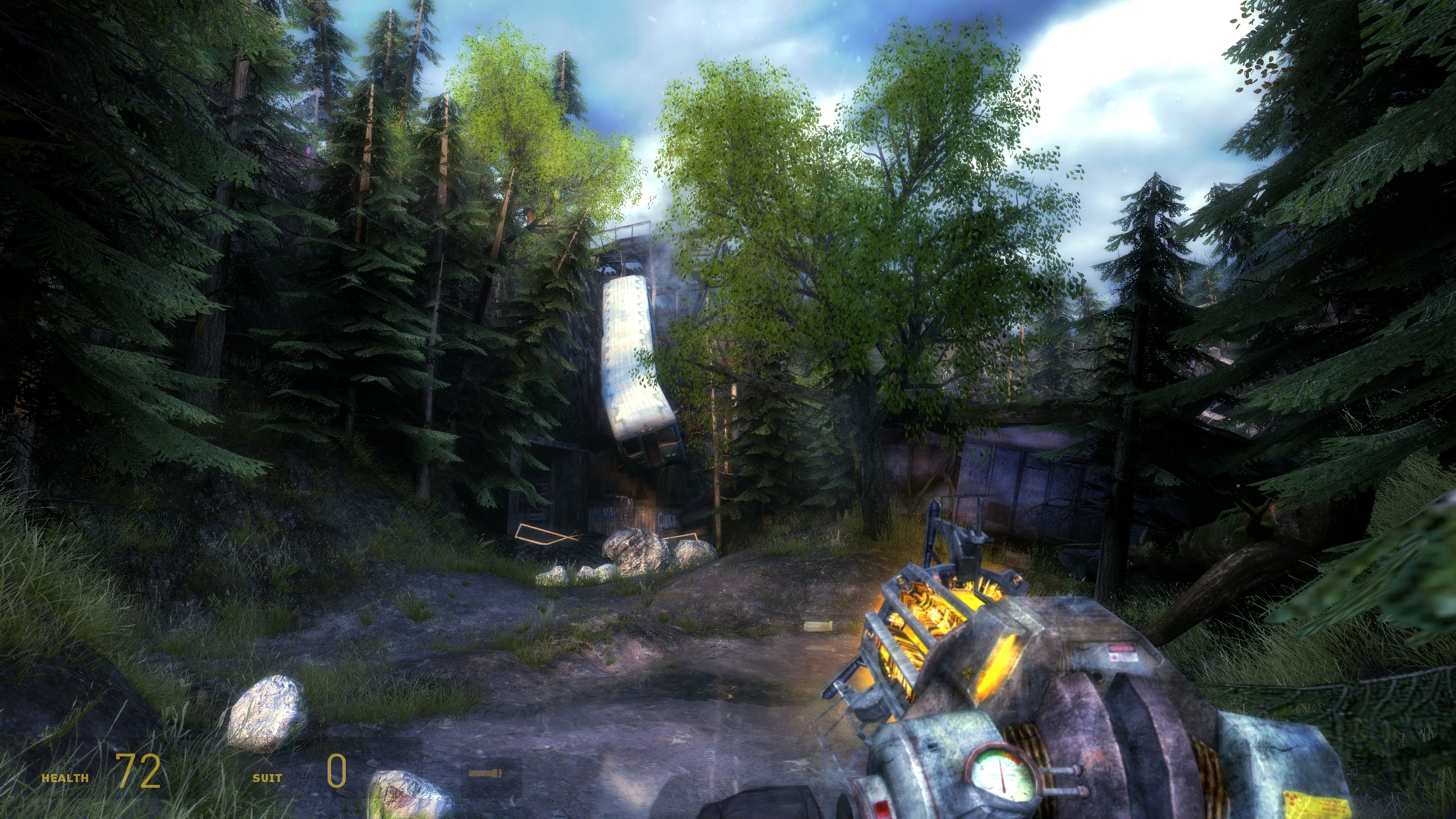

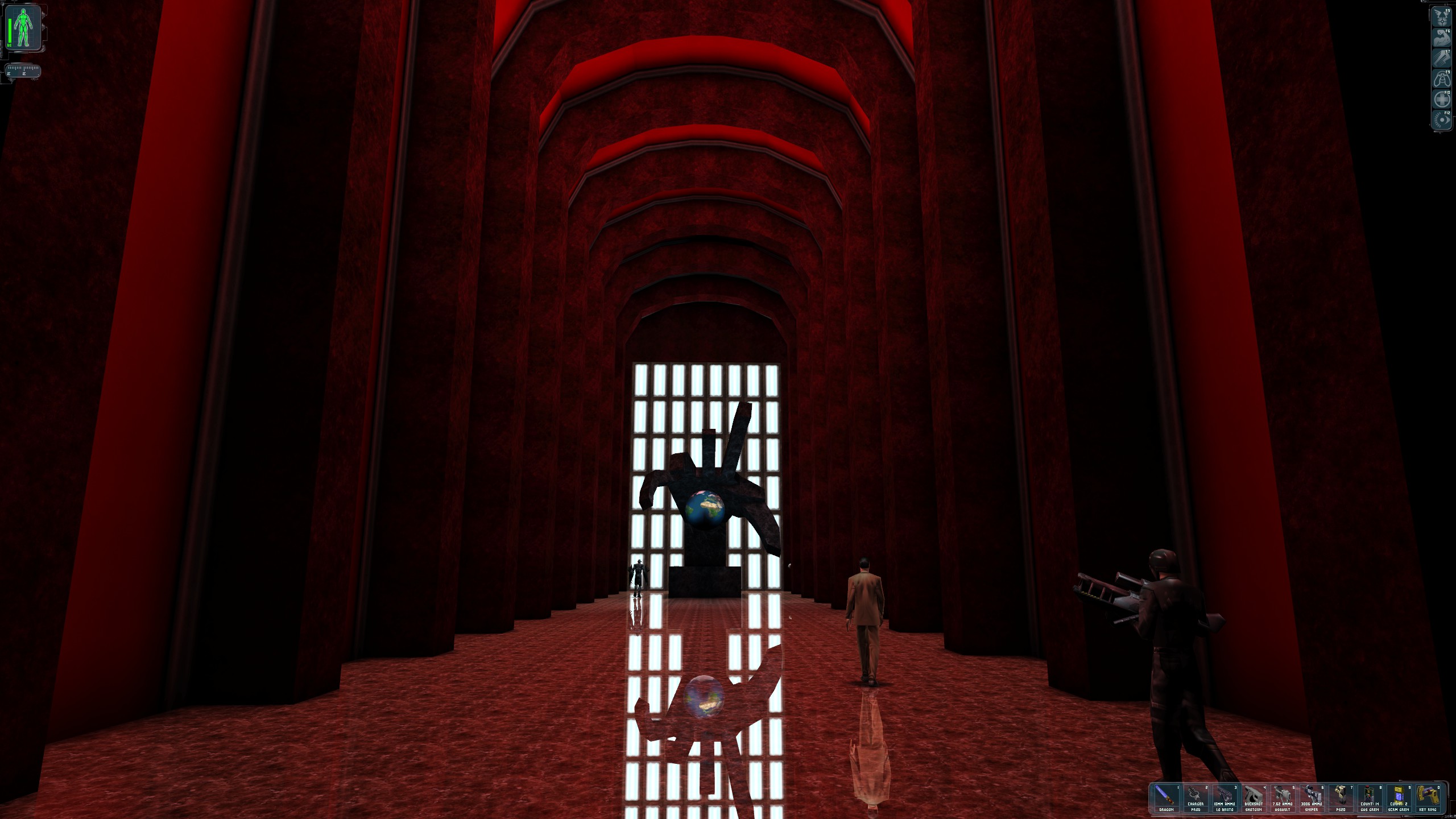
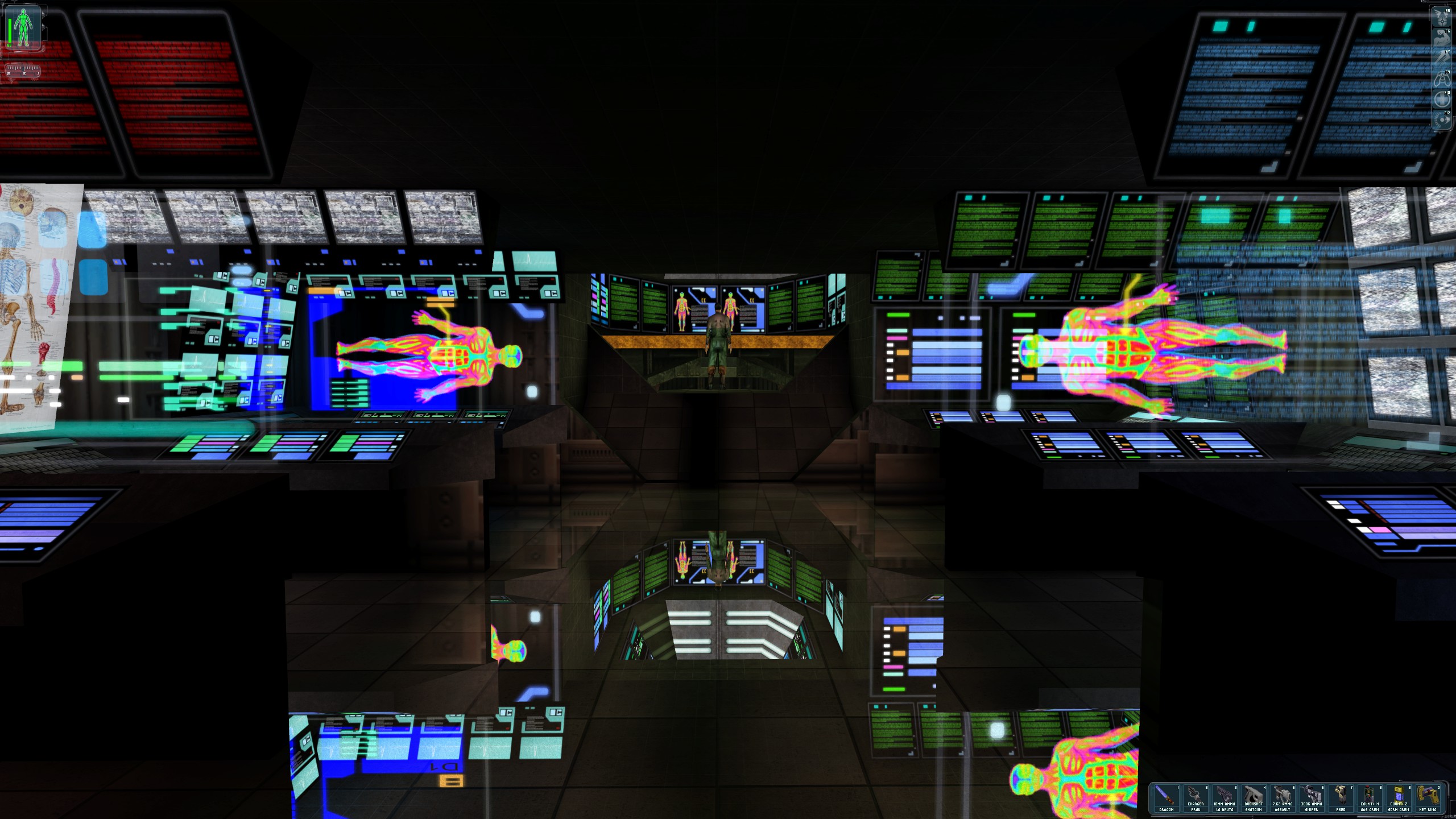
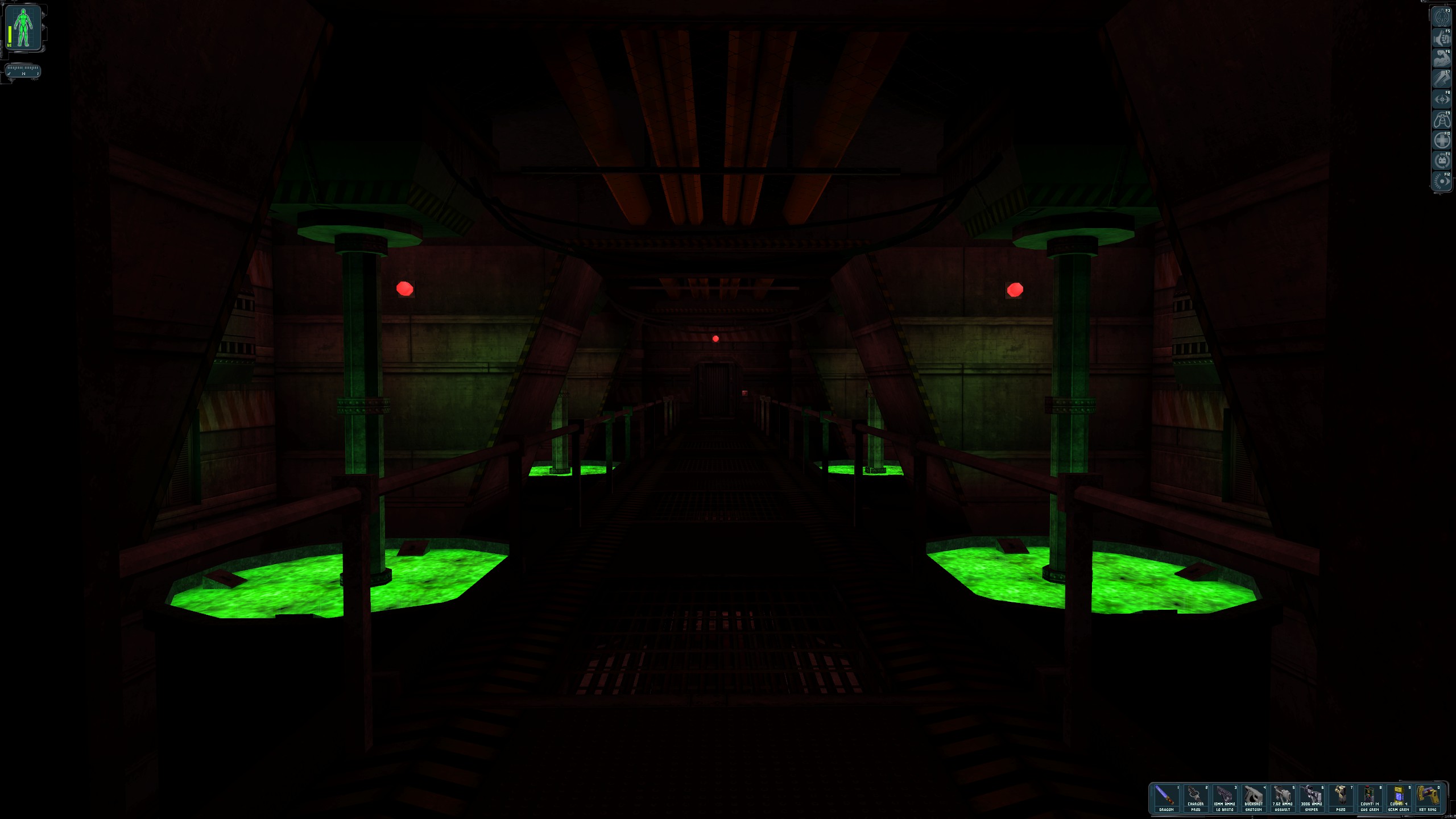
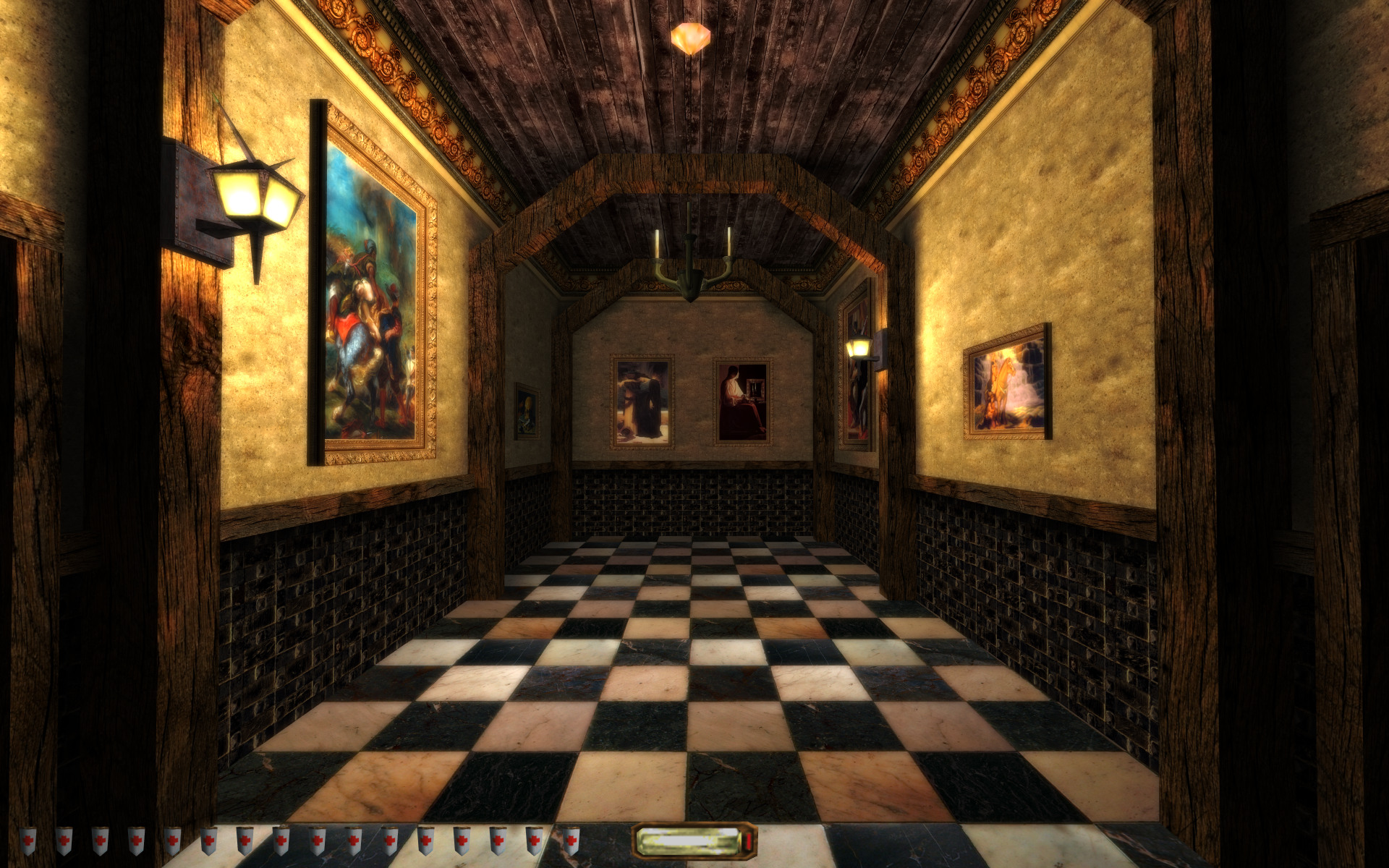
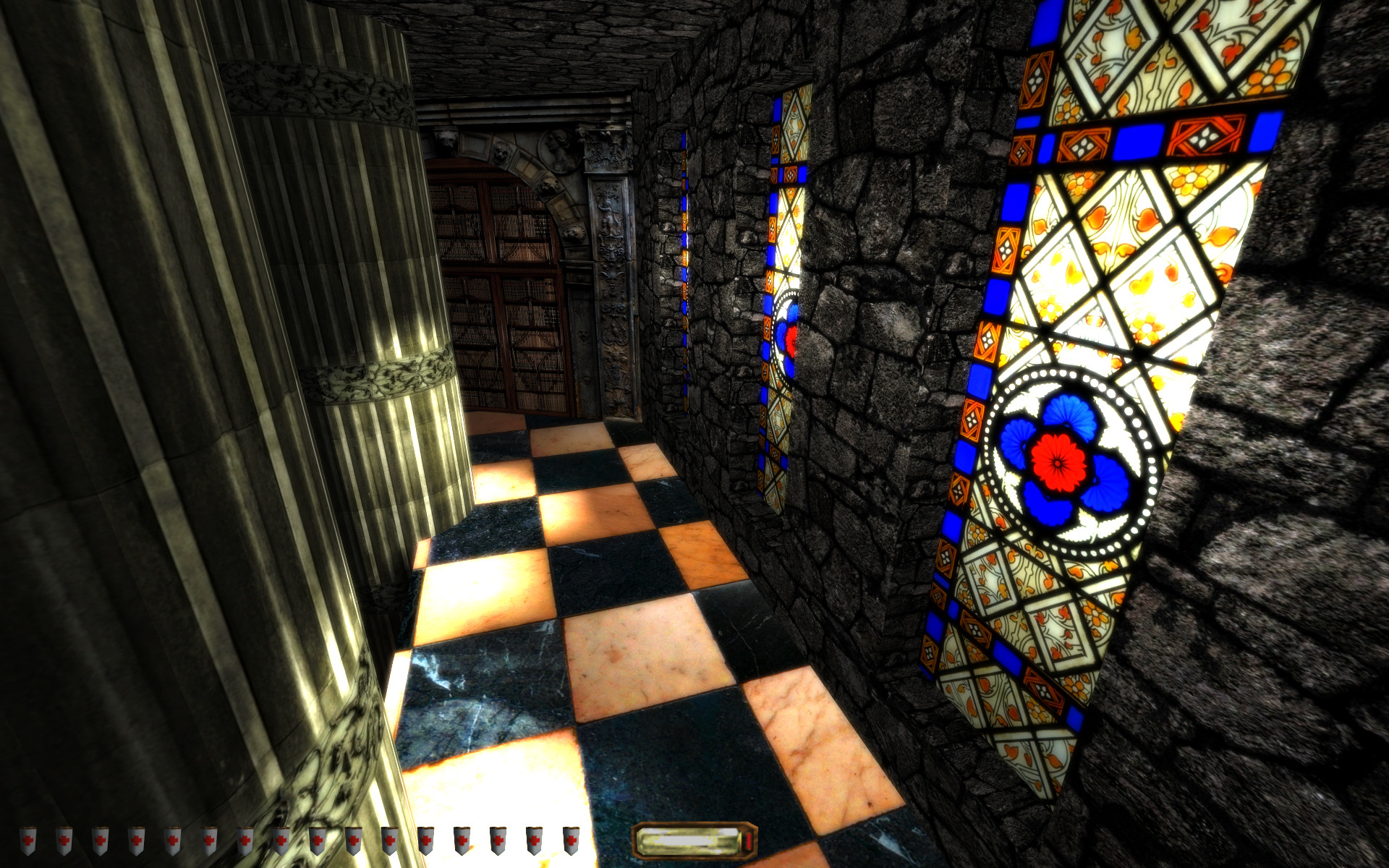
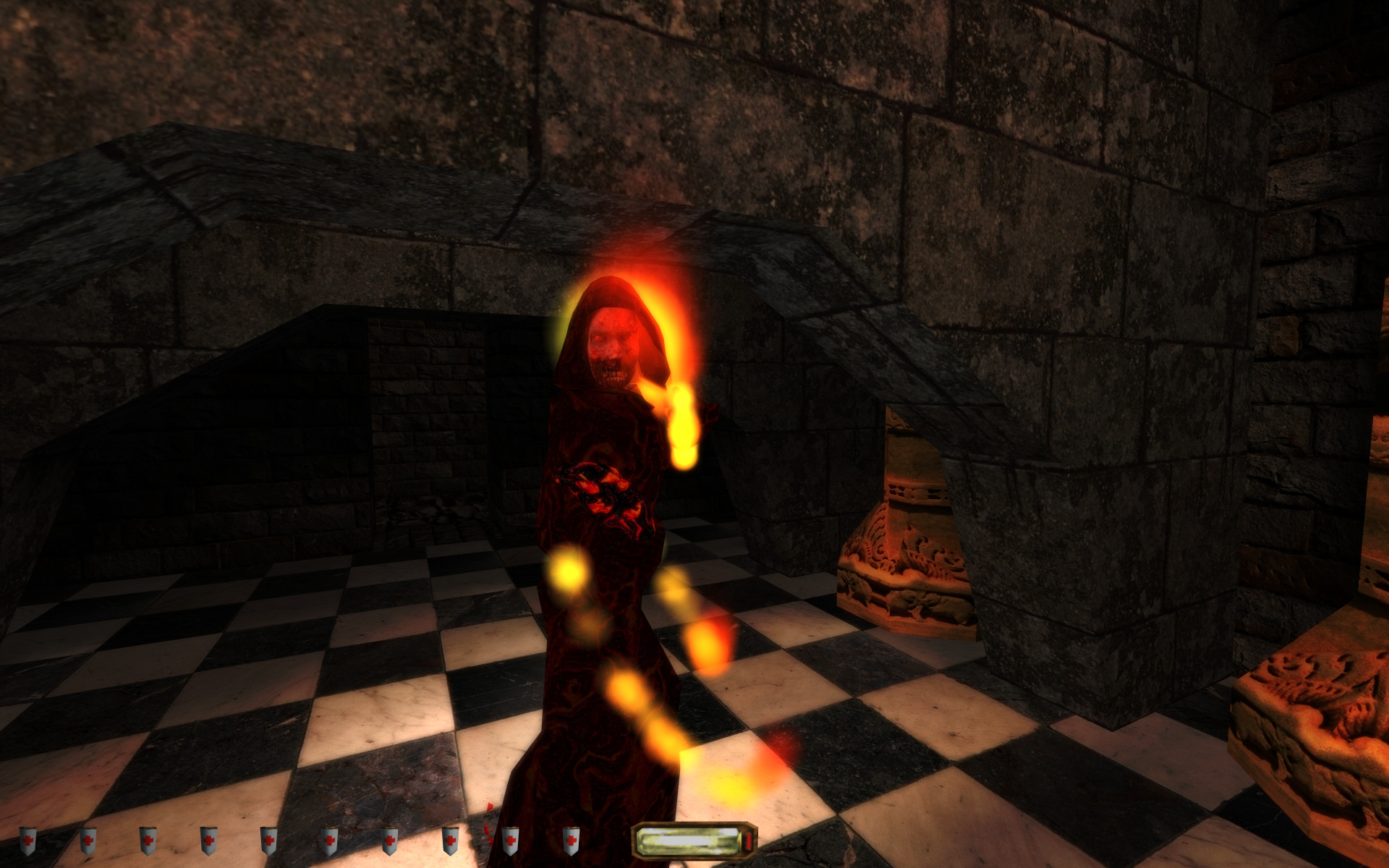
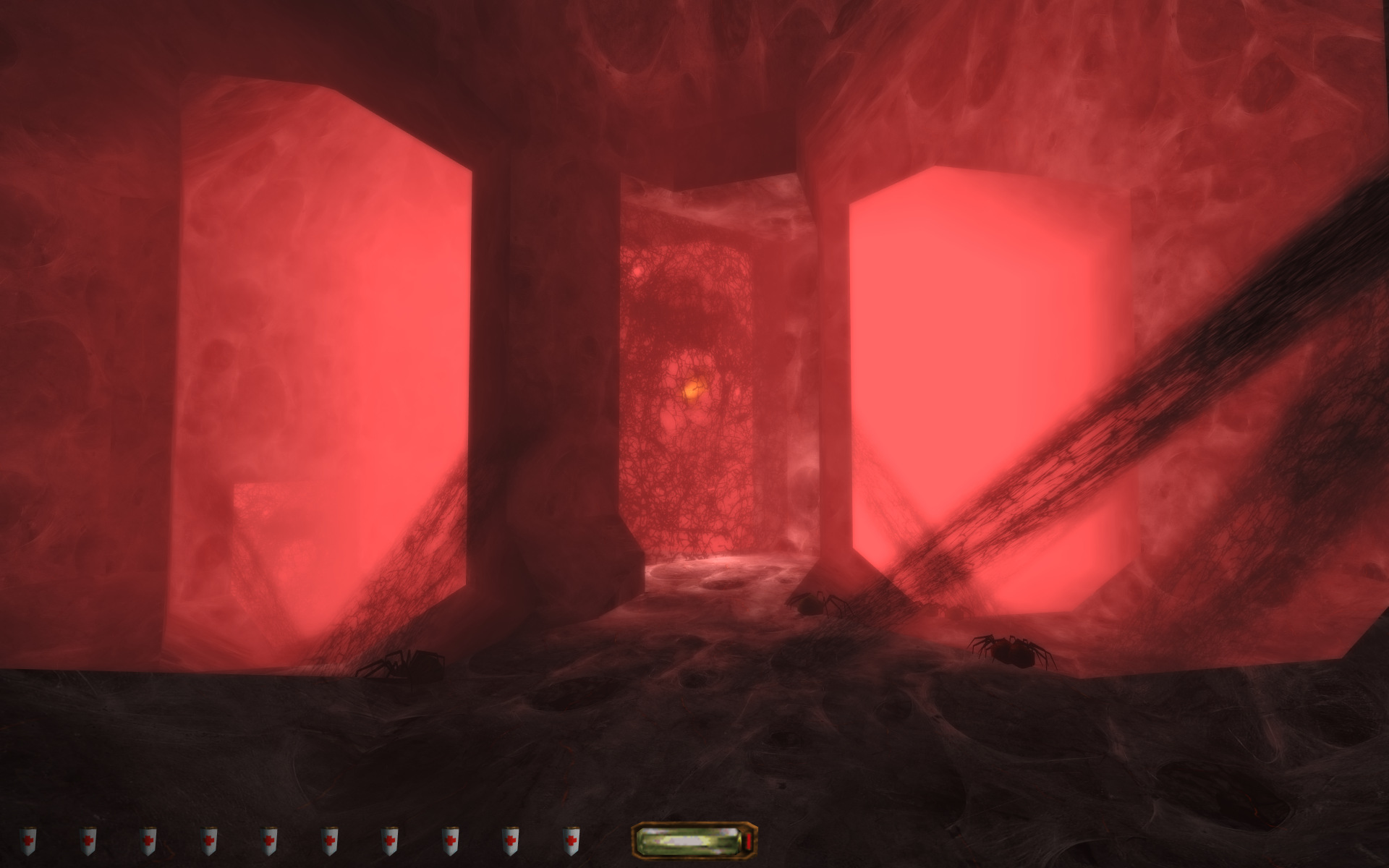



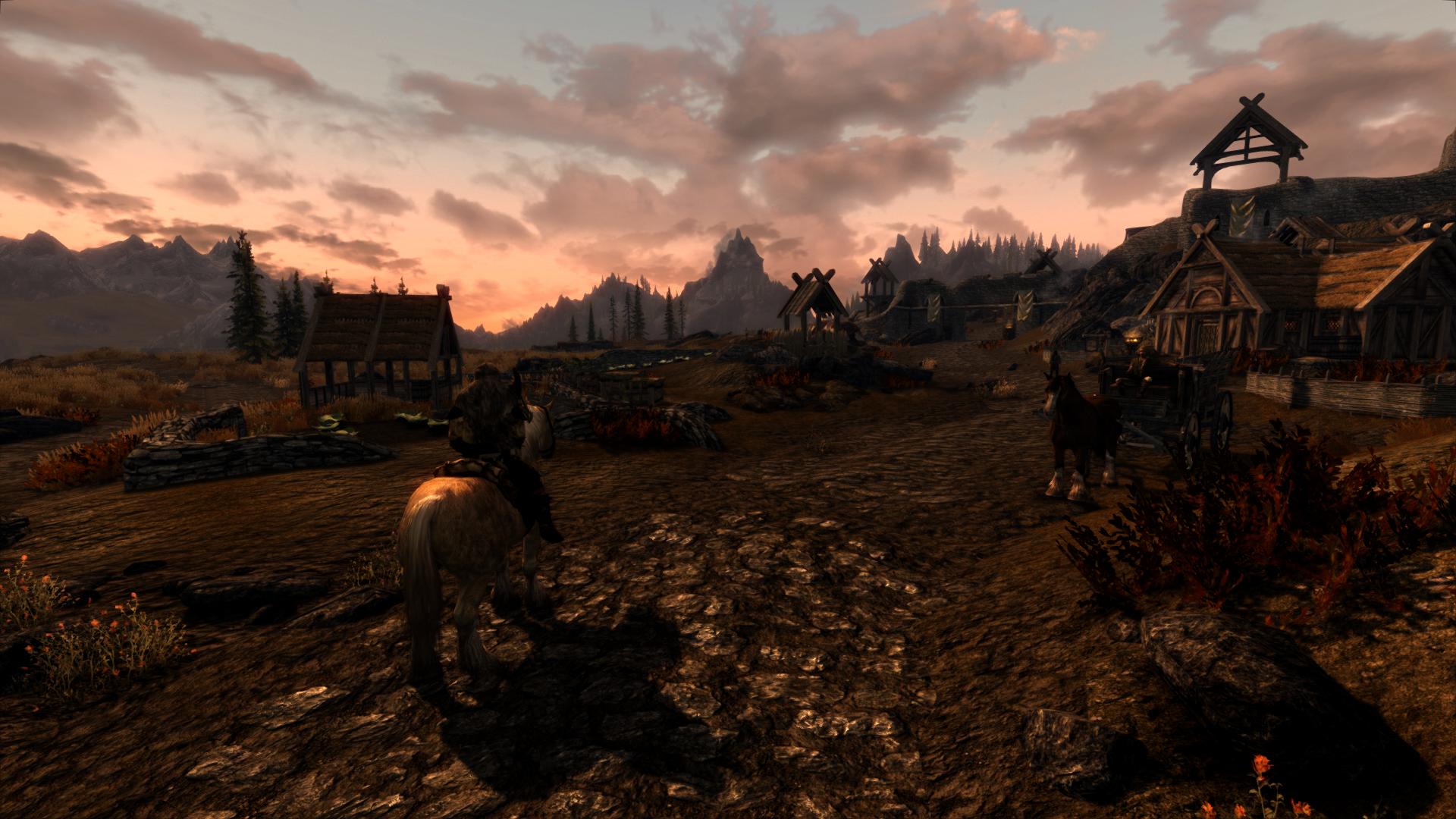




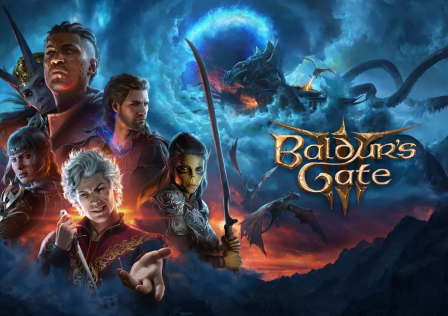



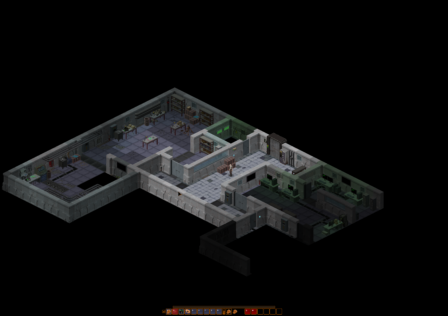
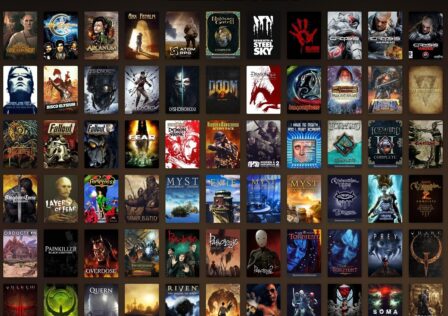
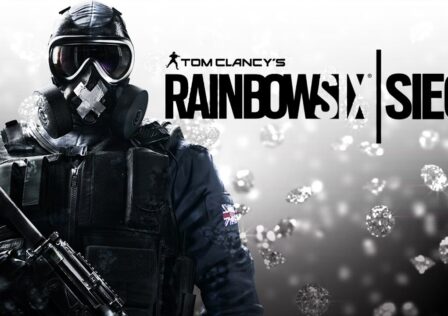


[…] We talk a lot about monitors and display technology in general here at GND-Tech. Display technology in general is not where it should be, but computer monitors have it the worst. To those without much knowledge in this area, it would be beneficial to first read this article. […]
[…] cover this subject in our “biggest myths“ article but quite frankly this deserves its own separate […]
[…] Although it was once worshiped, humanity turned against it, presumably when Christianity took over and branded it a demon. It really emphasizes and makes note of the fact that people are sheep: an individual is a thinker, while a group is a herd. Ironic, since this still applies to people today, especially to gamers. […]
[…] modes that involve mindless killing and holding points. If you believe otherwise, please refer to this article before continuing to read this […]
[…] may also wish to read this article which is somewhat […]
I tend to call Bioshock a game in which all that’s interesting has already happened and I’m there to destroy what’s left of the city. Not many games outright depress me, but Bioshock does due to its wasted potential. The city of Rapture is a fascinating setting; the time period, music, art style… Everything about it speaks to me – but then I realize it’s just another repetitive corridor shooter that gradually declines as the levels become simpler and lazier, and the game runs out of things to say. If it wasn’t boring before the “plot twist”, it certainly was… Read more »